Samsung The Frame Pro 2025 is a television that brings a breath of freshness to the lifestyle model segment. Its design takes center stage – a symmetrical frame, the ability to easily change decorative frames, and above all, the image effect on the wall thanks to the matte coating and special mount. In everyday use, it makes a great impression, and the Art Store feature combined with the high brightness of the screen means that the television works well not only as a display for movies and series but also as a decorative element in interior design. It is also hard not to appreciate the gadget-like addition of the wireless One Connect module – the ability to hide the box with ports anywhere in the living room provides significant design flexibility. In terms of image quality, The Frame Pro holds up quite well. Brightness levels of up to 900 nits in peak scenes allow for enjoyment of HDR effects even in brightly lit rooms, while the VA panel ensures stable and solid contrast. On the other hand, there are quite a few question marks. First and foremost – the naming. The designation "Pro" and the Mini-LED suffix suggest that we are dealing with an advanced local dimming system. However, in the 65-inch variant, we counted only 24 zones, all located at the bottom edge of the screen. You probably already know the effect after reading this review. Black levels and contrast are acceptable, but far from what Mini-LED televisions with full, dense backlighting provide. The issue of the wireless module also raises mixed feelings. While it indeed performs decently for connecting an amplifier or decoder, gamers and PC users will quickly discover that direct connection to the television via MICRO-HDMI is a necessity. Otherwise, they must contend with high input lag and worse font readability. Therefore, it is difficult to truly call The Frame Pro "Pro" in a strictly technological sense – it would be more appropriate to say it's "Frame Plus." A great lifestyle television, polished and visually striking, that will successfully fit into a bright, modern living room, but at the same time, it does not reach the level of quality we could expect from a product labeled as Mini-LED. It is a device that will delight with its design and additional features but will leave a slight sense of disappointment for those who expected a true breakthrough in image quality.
- Matching (Score)
- Our verdict
- TV appearance
- Where to buy
- Contrast and black detail
- HDR effect quality
- Factory color reproduction
- Color reproduction after calibration
- Smoothness of tonal transitions
- Image scaling and smoothness of tonal transitions
- Blur and motion smoothness
- Console compatibility and gaming features
- Input lag
- Compatibility with PC
- Viewing angles
- TV efficiency during daytime
- Details about the matrix
- TV features
- Apps
- Playing files from USB
- Sound
Samsung The Frame Pro vs Samsung OLED S90F (QD-OLED)
Direct compare
Check the best price offer:
Samsung The Frame ProCheck the best price offer:
Samsung OLED S90F (QD-OLED)The Frame Pro / LS03FW
S90F / FAT / FAE
Available screen sizes: 65”

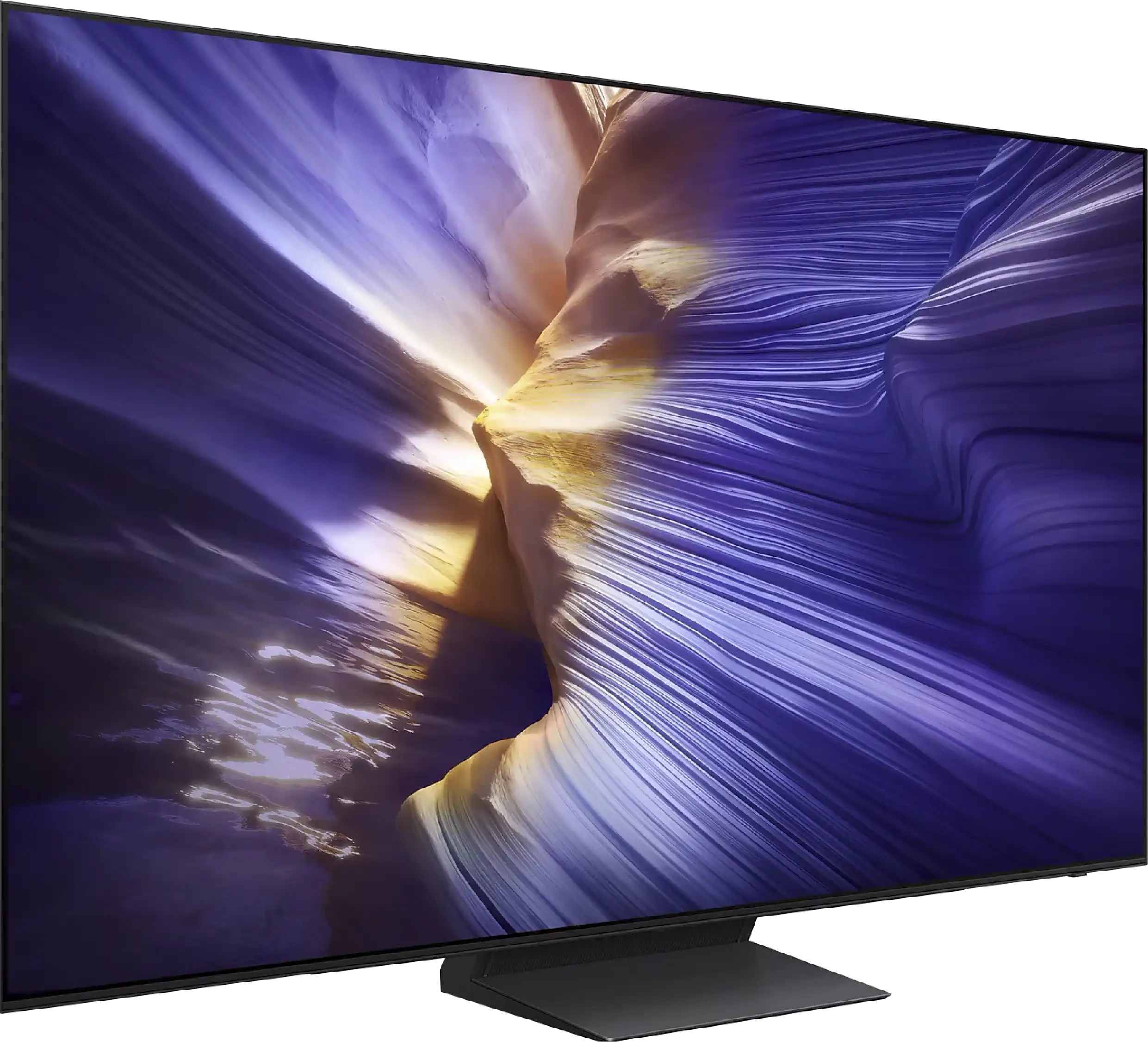
Panel type: LCD VA
Resolution: 3840x2160
System: Tizen
Model year: 2025
Complete the survey to find out the result

Panel type: QD-OLED
Resolution: 3840x2160
System: Tizen
Model year: 2025
Complete the survey to find out the result

Overall rating
7.3
8.4
Movies and series in UHD quality
6.8
9.0
Classic TV, YouTube
6.6
9.3
Sports broadcasts (TV and apps)
6.8
8.9
Gaming on console
8.6
9.8
TV as a computer monitor
8.4
8.6
Watching in bright light
7.0
5.7
Utility functions
7.7
7.7
Apps
8.7
8.7
Sound quality
6.4
7.4
Complete the survey to find out what fits your preferences
Advantages
Premium design – symmetrical frame, interchangeable frame customization, true image effect on the wall
Wireless One Connect module – no visible cables by the TV, easier space arrangement
Matte screen coating – no reflections even in bright rooms
High brightness ratio – up to 900 nits
Wide color gamut – QLED
Smooth tonal transitions, practically no banding
High motion fluidity – 144 Hz panel
Gaming features – VRR, ALLM, 144 Hz, Game Bar, low input lag (wired)
Tizen system – fast, intuitive, with a full suite of applications and support for AirPlay and voice assistant
Art Store – unique feature, TV as a digital picture frame
Mount included
QD-OLED panel with exceptional blacks and contrast
Very high brightness for an OLED in this segment (around 1700 nits)
Great HDR effect and wide color gamut coverage thanks to quantum dot technology
Perfect viewing angles – the picture looks great even from the side
Effectively minimizes reflections in bright living rooms
Exceptional motion smoothness – 144Hz OLED panel
Complete gaming package: HDMI 2.1, ALLM, VRR, Game Bar, low input lag
Intuitive and fast Tizen system with a large app base
Good sound quality for a TV + support for Dolby Atmos
High build quality and slim design
Disadvantages
It's hard to call it a true Mini-LED – edge lighting
Poor viewing angles (they could be better for improved wall image quality)
No HGiG* feature
Flat sound, little bass. A soundbar will definitely come in handy
Issues with font legibility and significant lag (input lag) when using the wireless One Connect module.
*The HGiG feature disappeared with the latest TV update. We are monitoring the situation, and if anything changes in this regard, we will let you know.
In very bright daylight, black can take on a navy hue (a feature of QD-OLED panels)
No support for DTS:X (a problem for Blu-ray disc fans)
No recording function to USB from built-in tuners
Why can't we find such a panel in all sizes?!
Our verdict
The 65-inch Samsung S90F is a television that demonstrates how significant a quality leap can come from the use of QD-OLED technology in a mid-range model. Among other variants, the S90F stands out as the best – it offers not only perfect black and infinite contrast like other models with WOLED panels but also noticeably higher brightness and a wider color gamut. This translates into more impressive HDR, deeper colors, and smoother tonal transitions, which are impressive both in cinematic productions and in gaming or sports. In everyday use, this television is incredibly versatile: it easily fits the role of an entertainment center in the living room, a large monitor for PC gamers, or simply a screen for evening movie sessions. The Tizen system operates swiftly, offers a wide selection of apps, and integrates with SmartThings, which will please those who like to have their smart home under control. Gamers have access to a full range of modern features: four full-fledged HDMI 2.1 ports, VRR, ALLM, Game Bar with additional enhancements, and, most importantly, remarkably low input lag. Additionally, the characteristic pixel response speed of OLEDs makes sports and games look simply stunning. The S90F also holds its own in terms of design: slim bezels, aesthetic finishes, and a panel that resembles a sheet of glass do their part. The only notable limitation to keep in mind is the preservation of black levels in the QD-OLED panel under very difficult, heavily sunlit conditions. In such situations, it can slightly "heat up," resembling the color of dark cherry rather than perfect black. But in the evening, when most of us sit down to watch movies or series – the problem disappears completely. And then the S90F shows its full potential, delivering an image that can easily be compared to televisions twice its price. That’s why the 65-inch Samsung S90F can be called the most cost-effective OLED of 2025. It’s a model that combines remarkable picture quality, versatility, and an affordable price in the mid-premium segment. If you’re looking for a television that excels in movies, games, sports, and everyday viewing, while not wanting to spend a fortune on absolute flagship models – it’s hard to find a better choice today.
TV appearance
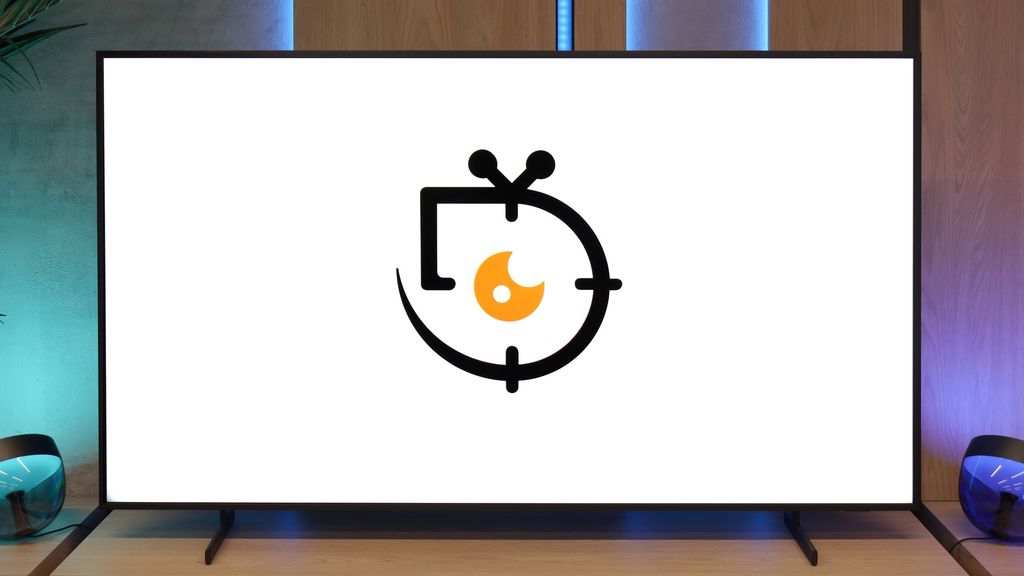
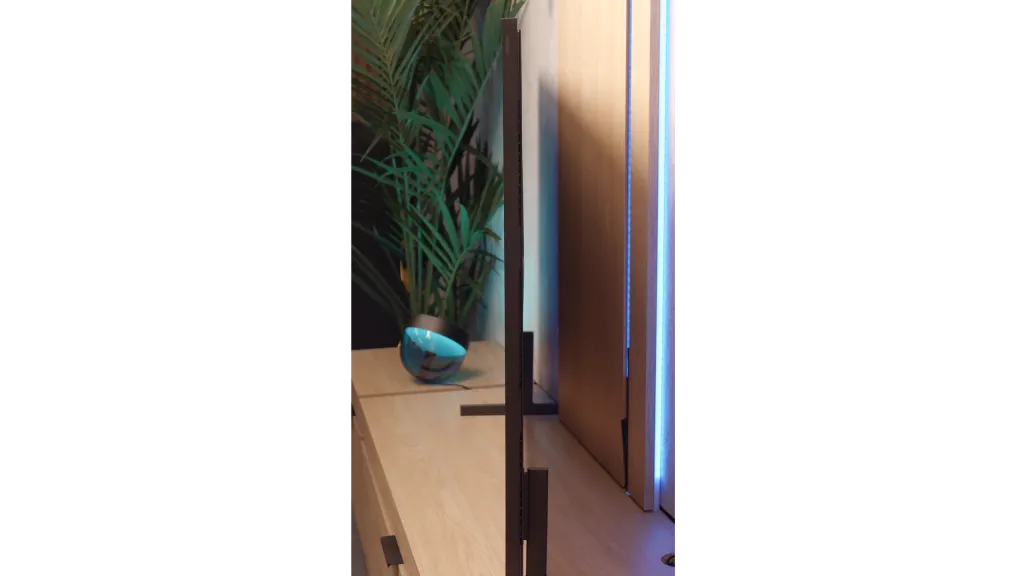
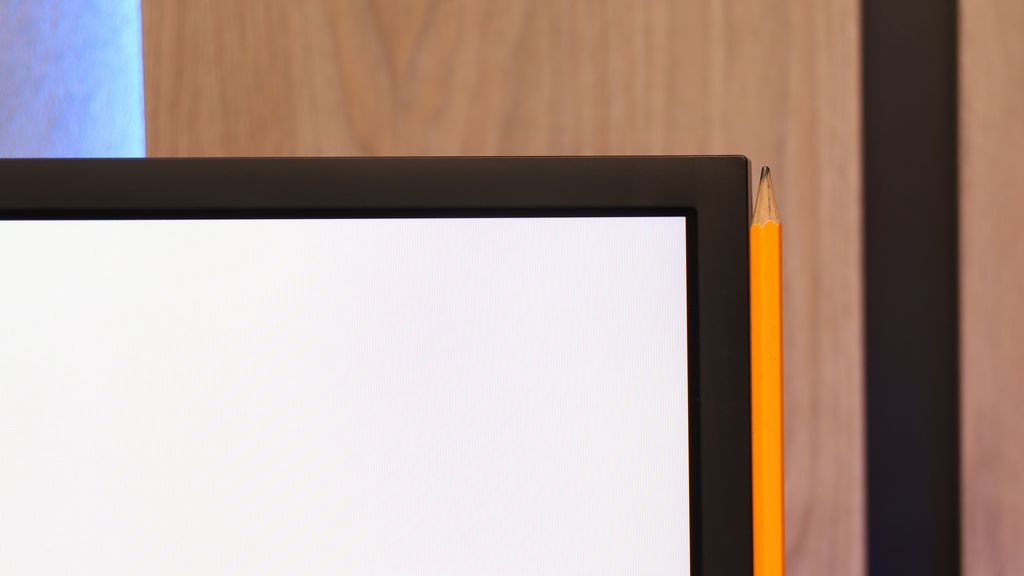
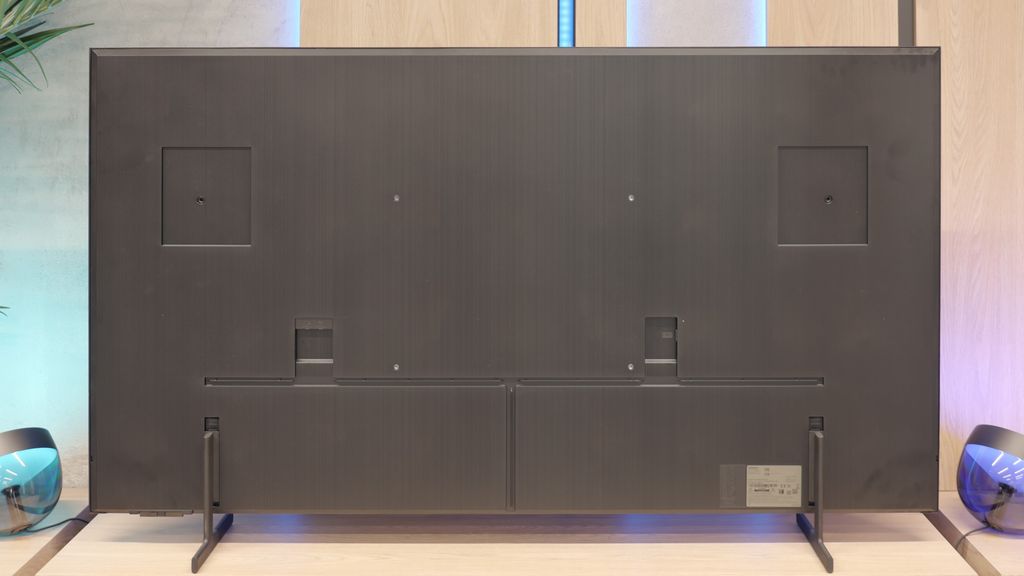
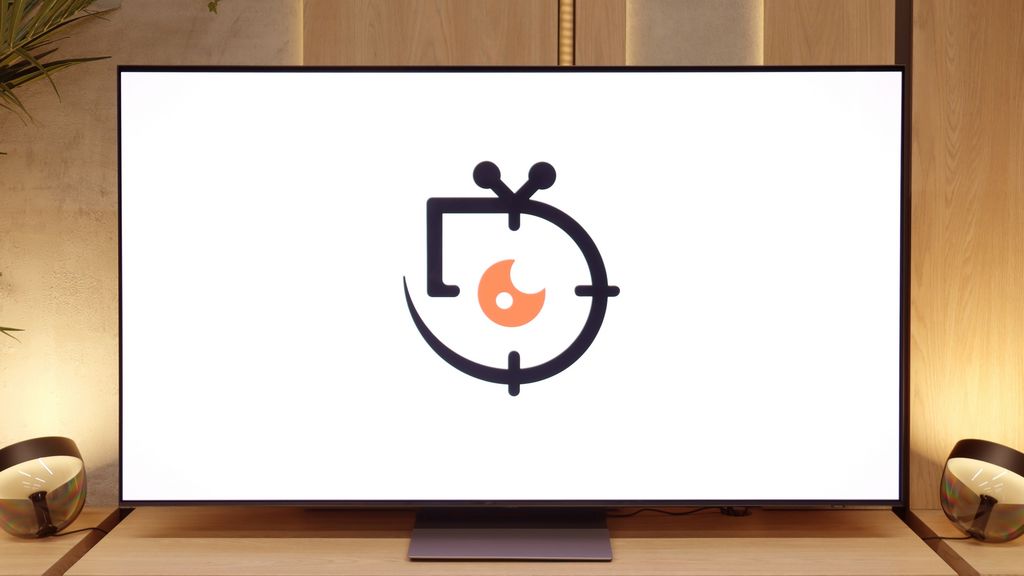
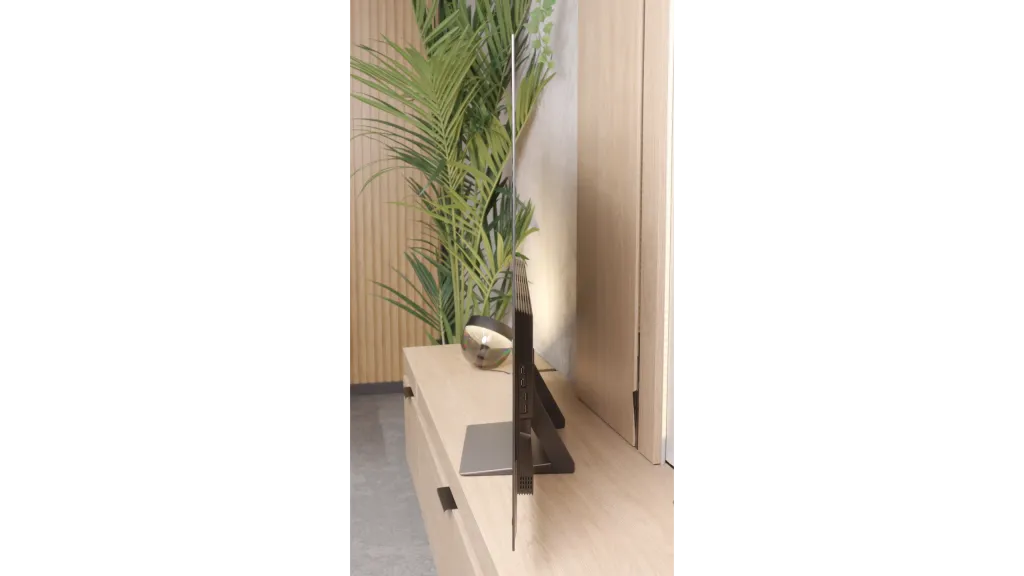
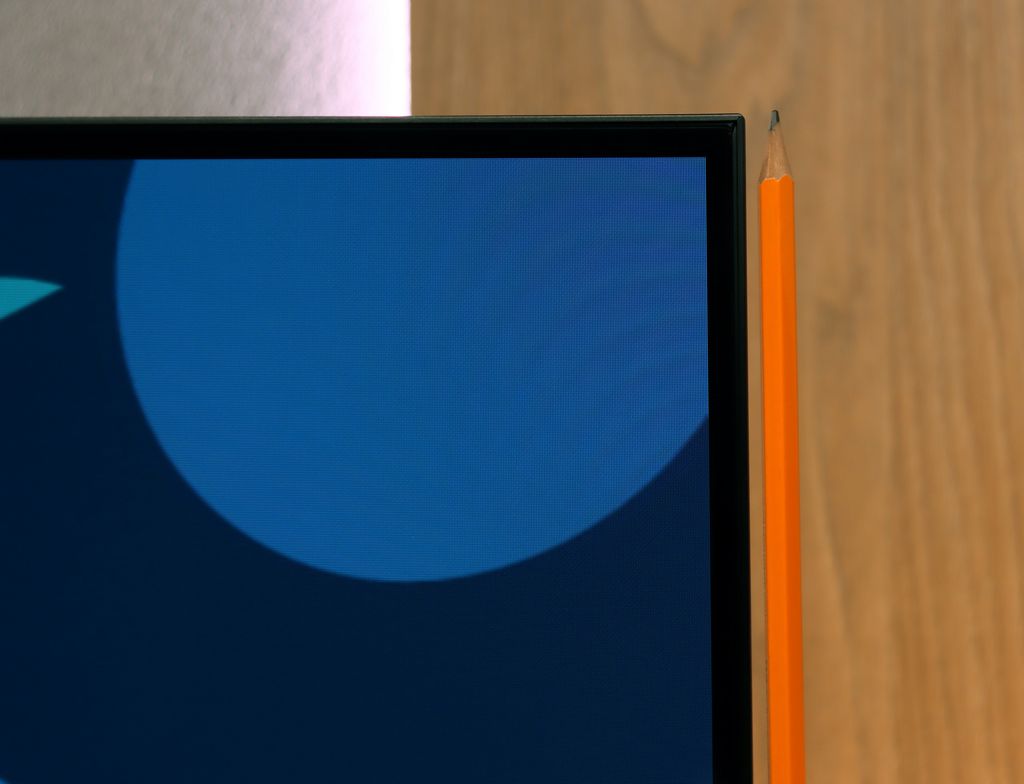
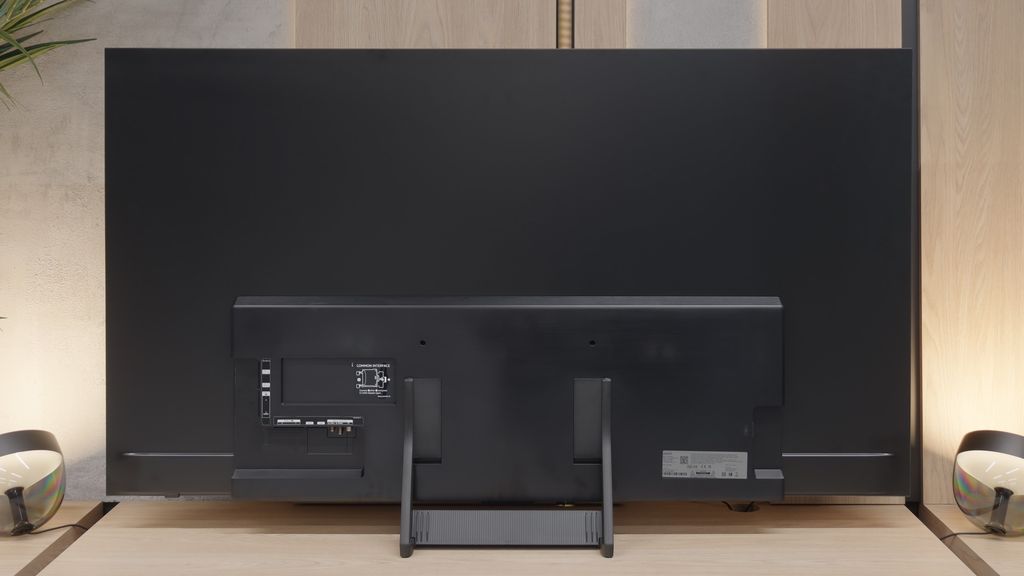
Where to buy
Contrast and black detail
5.7/10
10/10
Local dimming function: Yes, number of zones: 24 (1 x 24)
Contrast:

Result
6,250:1

Result
5,100:1

Result
4,650:1

Result
4,350:1

Result
4,300:1

Result
∞:1

Result
∞:1

Result
∞:1

Result
∞:1

Result
∞:1
Halo effect and black detail visibility:
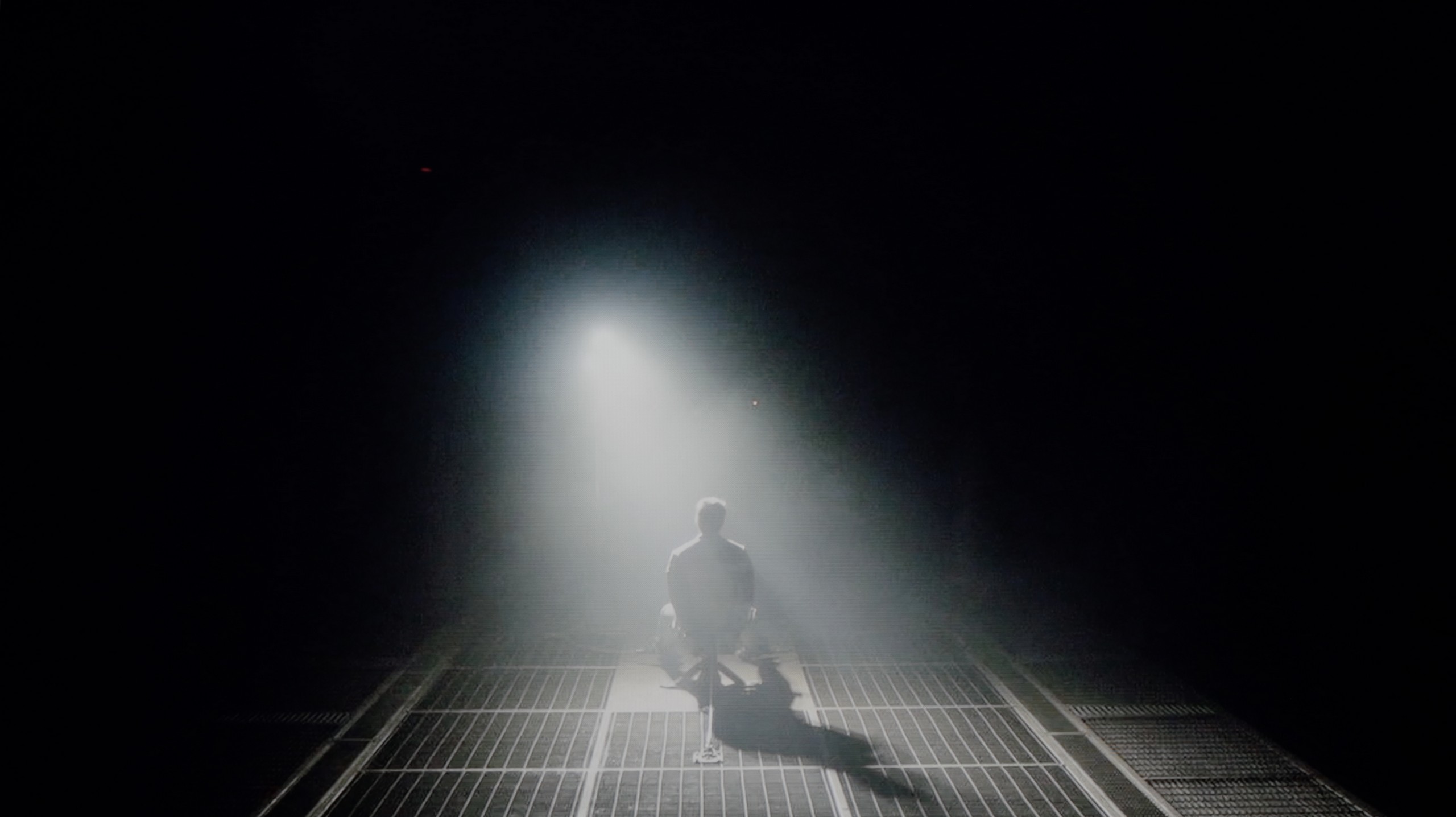
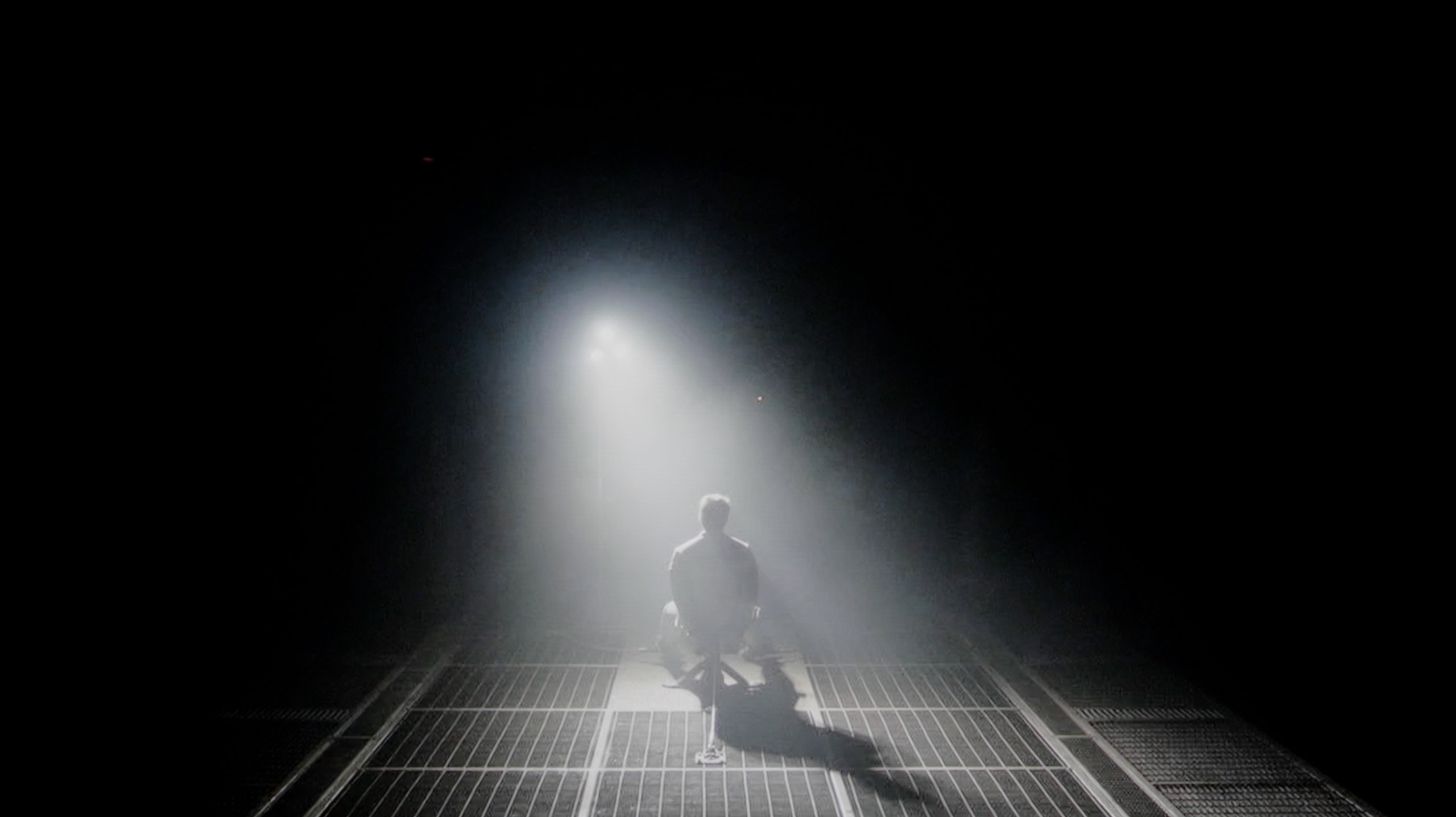
Samsung The Frame Pro has officially been labeled as a Mini-LED backlit television, but… is it really? In the 65-inch variant we tested, we counted only 24 dimming zones. The number itself seems somewhat modest, but the more important aspect is their placement – all of them are located along the bottom edge of the screen. In practice, this means that The Frame Pro should be treated more as edge-lit rather than a full-fledged Mini-LED with dense, direct local dimming. Samsung has used a similar maneuver before, renaming the Q70 series to Neo QLED televisions – mainly for marketing purposes. How does this translate to picture quality? Black levels and contrast look decent, but there are no effects known from televisions with advanced local dimming like in the QN80 series. Much of this is due to the high-quality VA panel, which provides solid parameters on its own – a contrast ratio of about 5000:1 looks good and, importantly, is stable without significant fluctuations. However, if someone buys The Frame Pro hoping to experience “true Mini-LED,” they might feel disappointed. We ourselves expected this model to differentiate itself more from the classic The Frame series in terms of contrast quality; however, the differences turned out to be smaller or even nonexistent compared to what the “Pro” designation might suggest.
In terms of black and contrast, it doesn't matter whether we choose the version with WOLED panel or QD-OLED for the S90F. In both cases, the effect in typical cinematic conditions remains the same, and we can always count on perfect black. This is impressive not only when watching movies but also regular shows. If someone has never had contact with an organic matrix, the first encounter with such a television can be truly stunning. There is no difference here whether we are looking at less demanding scenes, like those from the movie Oblivion, or at segments where only a few details remain on the screen, such as stars in the sky in Star Wars – in every case, the image remains clean, and the details are perfectly separated from the background. This is one of the greatest advantages of OLED, as each pixel is controlled independently and acts like a separate zone. This means there is no need to worry about compromises in the visibility of details in lights that can disappear even in the best LCD TVs. It is in cinematic conditions that the S90F shows its full potential and can impress the most. Here, OLED technology – including the QD-OLED panel – performs flawlessly and delivers an effect that is hard to find any faults with.
HDR effect quality
5.8/10
7.8/10
Luminance measurements in HDR:

Result
745 nit

Result
458 nit

Result
476 nit

Result
446 nit

Result
660 nit

Result
1416 nit

Result
1585 nit

Result
1449 nit

Result
1379 nit

Result
808 nit
Scene from the movie “Pan” (about 2800 nits)


Scene from the movie “Billy Lynn” (about 1100 nits)


Static HDR10


Dynamic: HDR10+
Dynamic: HDR10+


HDR luminance chart:
Samsung OLED S90F (QD-OLED)
HDR luminance
Samsung The Frame Pro
HDR luminance
Samsung The Frame Pro belongs to relatively bright televisions. In synthetic tests, we managed to achieve values around 900 nits, which, for a lifestyle model, is quite a decent result. In full-screen scenes, such as the frame from the movie The Meg or the opening sequence in Life of Pi, brightness remained at levels of 700–800 nits. These are values that allow you to fully enjoy HDR effects and capture their cinematic magic. However, the situation complicates when smaller, point light sources appear on the screen. The edge lighting used here, equipped with the ability to locally dim entire strips, does not handle them very well. It sometimes happens that small elements are excessively dimmed, which weakens the effect, or on the contrary – they are significantly brightened, but at the cost of losing black depth in that part of the image. This can be compared to light glows resembling the spread of a laser beam in dense fog – the effect is visible and bright, but at the same time, it is not very natural and distracts our attention. Fortunately, the color aspect performs better. Thanks to the use of a quantum dot filter (QLED), the colors are saturated, and the reproduction of the DCI-P3 palette exceeds 92%. In general, movies or series watched in HDR on The Frame Pro present a rich color palette, even if the contrast and the operation of the backlight algorithms can sometimes distract our attention.
The biggest difference between the 65-inch S90F and the other versions is brightness. The QD-OLED panel can achieve up to 1700 nits in laboratory tests, which is over 500 nits more than the variant with the WOLED panel. This translates to a significantly stronger and more engaging HDR effect. In most scenes, bright parts of the image look fantastic, and we have to admit we were pleasantly surprised because we expected results closer to the WOLED version, but we got an effect that makes a big impression even in movies. As with any OLED, there are moments when the panel has to limit brightness somewhat. This mainly concerns full-screen, very demanding scenes – for example, in the last test frame from the movie "The Meg," brightness drops to around 800 nits. However, it's hard to consider this a flaw since it’s still an excellent result, unprecedented in OLED TVs in this price range. All signs indicate that the 65-inch S90F could be one of the best choices this year for those looking for a strong OLED at a reasonable price. Another advantage of the QD-OLED panel in HDR content is its color gamut coverage. Thanks to quantum dots, the television achieves almost full 100% of the DCI-P3 color gamut and nearly 90% of the BT.2020 gamut. These values place it alongside much more expensive models and make it exceptional in its class.
Factory color reproduction
5.5/10
7/10


Factory Mode
After calibration
The best results were, of course, achieved in Filmmaker mode, which immediately showed that Samsung paid attention to the factory settings. In SDR content – the type of content most often viewed – The Frame Pro performed really well. White balance and gamma were almost perfectly matched, making the image look natural and consistent. Yes, there were some noticeable errors, especially in skin tones and reds, which could be overly saturated, giving everything a slightly “warmed up” character, but in everyday use, this did not significantly affect the viewing experience. In the case of HDR content, the situation was similar regarding white balance. It was at a good level; however, the biggest problem turned out to be brightness management. The EOTF curve was set in such a way that in many scenes the image appeared to be overexposed, and the brightest areas lost details and turned into solid patches of light. This severely undermined realism and made the colors appear strongly over-sharpened. Fortunately, Samsung provides the option for manual adjustment of the curve in its televisions, so we opted for calibration, and its results can be seen below.
Samsung S90F, like most modern televisions, offers several picture modes, but in keeping with our tradition, we checked it in the most important one, which is Filmmaker. This setting makes the picture look much more natural than in the default, often oversaturated modes. It is neither overly saturated nor artificially subdued – just closer to what you should actually see. However, that doesn't mean it's perfect. The S90F had noticeable shortcomings in white balance, primarily in the blue range, which created a slightly yellowish filter effect on most scenes. One might argue that it looks more "cinematic" because it's warmer, but let's not kid ourselves – George Lucas didn't shoot Star Wars in sepia 😉 (you'll find a comparison with a scene below as always). In HDR materials, there was also a problem with brightness management. The EOTF curve clearly showed that the television brightens the picture more than it should, which led to some effects looking too intense and deviating from the reference. Fortunately, many of these shortcomings can be eliminated through professional calibration – we will discuss the effects of this procedure further in the test.
Color reproduction after calibration
8.5/10
9.3/10




After calibration, the SDR mode looks simply perfect. We managed to eliminate the overly strong red saturation that previously gave the picture a somewhat excessively warm character. The colors became more balanced, which translated to a natural and pleasant reception of daily content – from television to movies and series from streaming or materials on YouTube. In HDR mode, the EOTF curve required the most work, as it originally caused excessive burning of the entire image. Calibration largely helped to "tame" this problem – the image stopped being overexposed, and details in bright areas became more visible. Of course, the limits are set by the television's own design, as edge lighting reveals its limitations, and even the smallest elements of light can still be oversaturated or blend into the background. However, this is a matter of technology, not calibration itself. After the correction, The Frame Pro is much more enjoyable to watch, and it's definitely worth opting for if you want to make the most of your television's capabilities.
Calibration quickly showed that the S90F has a substantial reserve of capabilities. The image in SDR immediately gained a natural quality – classic films stopped looking as if someone had applied a yellowish filter to them, and the colors regained their true character. It’s a return to the atmosphere of the original, without the impression that someone tried to "age" it artificially. In HDR content, the difference was even more pronounced. The EOTF curve was managed almost to a reference level, and any deviations are so subtle that most viewers won't even notice them. In practice, the S90F after calibration displays an image very close to perfection. Compared to the WOLED version, it performs even better – mainly due to the wider color gamut coverage, which makes the colors look fuller and more vibrant.
Smoothness of tonal transitions
9.5/10
8.8/10












Here Samsung truly deserves immense applause. The Frame Pro has proven to be one of the best TVs of the year when it comes to the smoothness of tonal transitions. During testing, we were practically unable to detect any noticeable issues with color blending – the gradients looked smooth and natural, and the "banding" typical of many TVs simply did not appear. Yes, in very dark scenes, minimal imperfections can be noticed, but you have to really focus to see them – even the seasoned eye of our editorial team had trouble with this. Therefore, in everyday viewing, there’s no way anything will disrupt your experience. This is a huge plus because it’s in darker scenes that TVs most often struggle. You won’t experience that here.
QD-OLED matrices, thanks to their very wide color palette, simply have a greater number of colors, which makes it easier to blend one shade into another smoothly. In the case of the S90F, this was clearly visible – compared to the classic version with a WOLED panel, we noticed a significant improvement. Most transitions were smooth and practically invisible, and the image in most scenes appeared exceptionally coherent. In very bright areas, slight imperfections can still be noticed, but they are cosmetic enough that they shouldn't distract the viewer's attention.
Image scaling and smoothness of tonal transitions
7.5/10
7.5/10
Smooth transition function
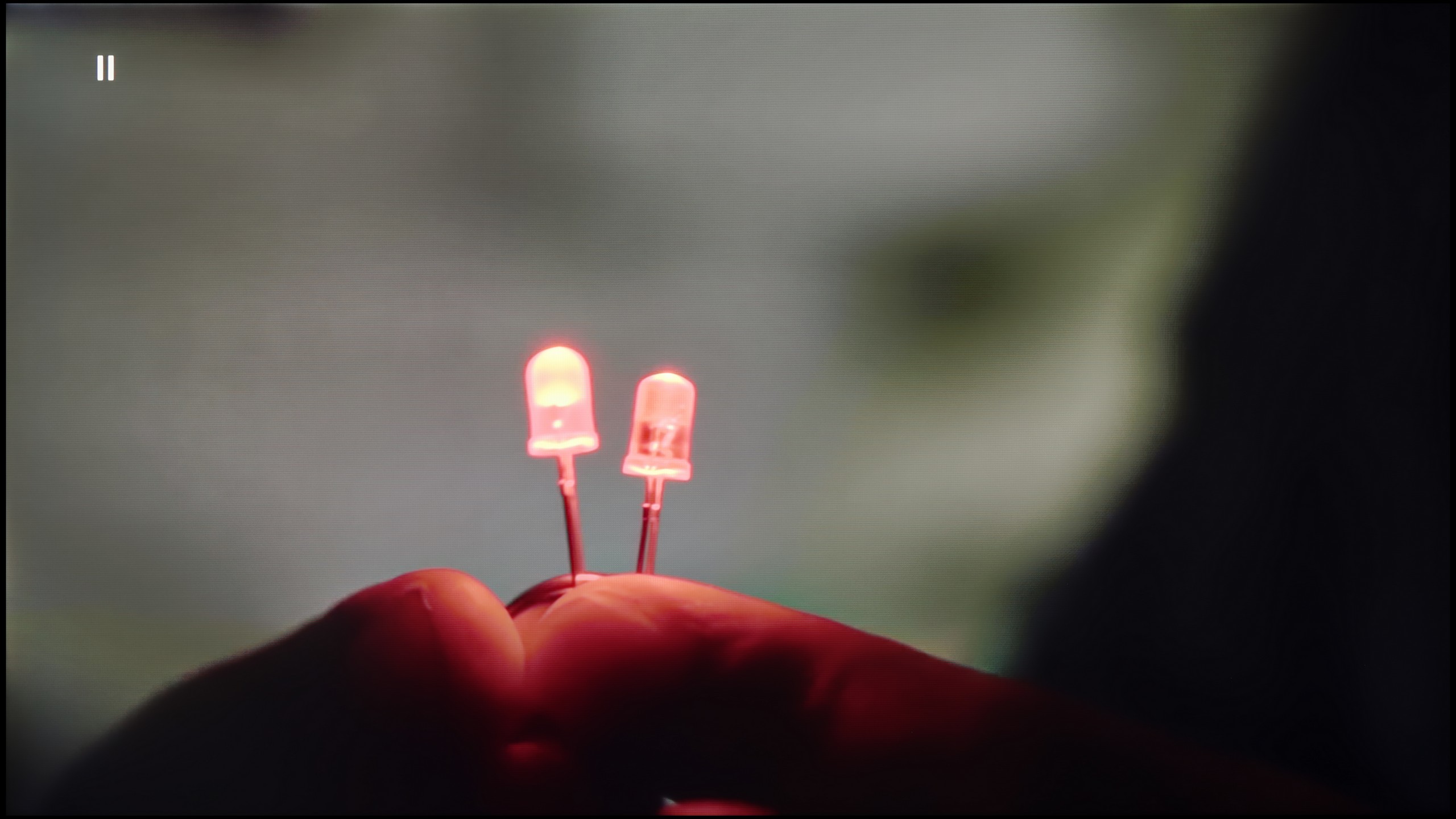
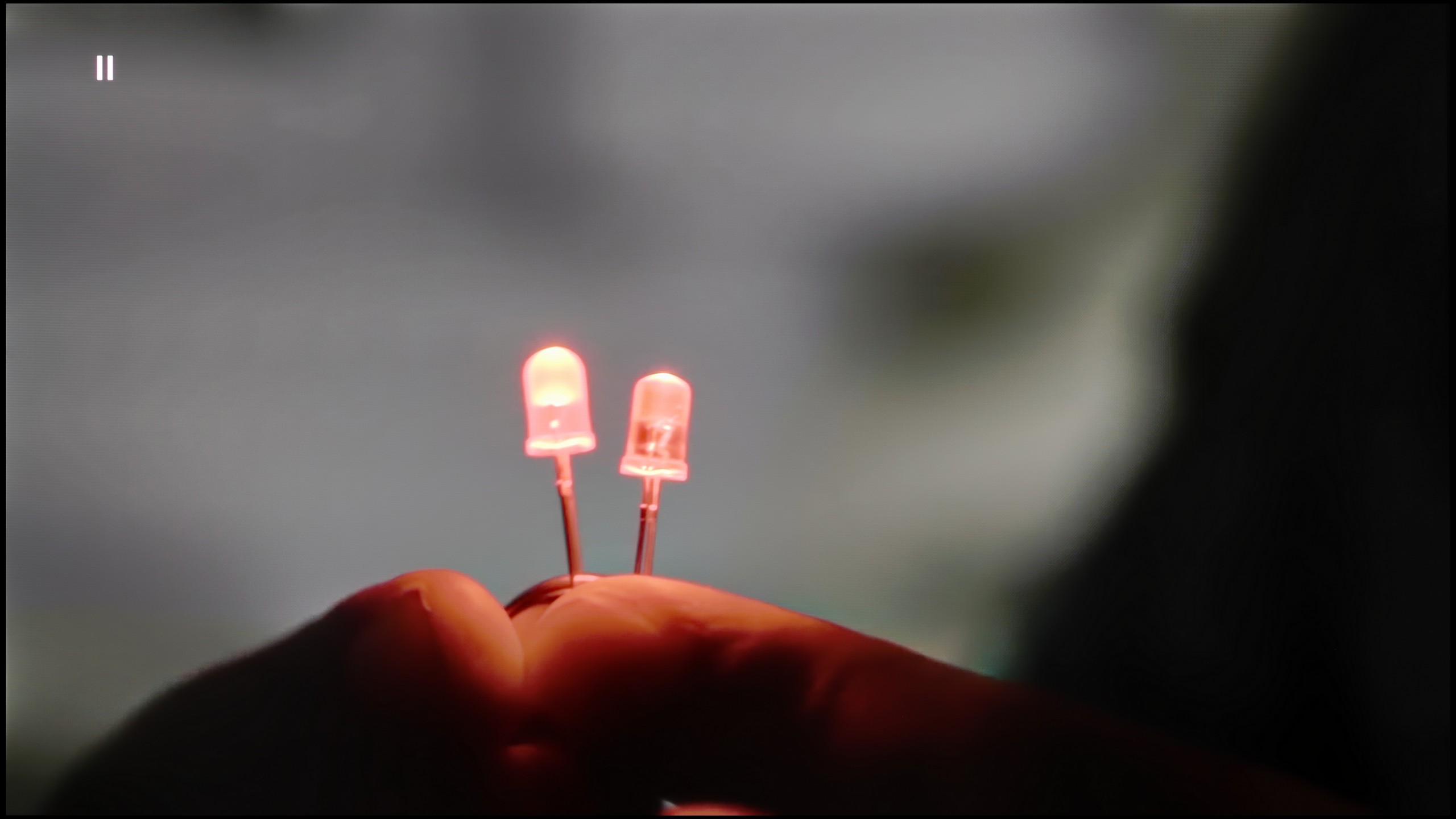
Image without overscan on the SD signal


While the smoothness of tonal transitions in 4K HDR content on The Frame Pro is not a problem at all, naturally with weaker signal quality – from television, HD content, or older Full HD films – imperfections may occur. Therefore, it is crucial how the television handles these limitations thanks to its image processor. The noise reduction feature works really effectively here. At the medium setting, it eliminates unwanted bands or artifacts, smoothing the image in a noticeable but not overly exaggerated way. However, it should be noted that Samsung tends to operate aggressively – even at the lowest setting of this feature, it can "eat" film grain. It is therefore advisable to use it with caution and adjust the settings to the material being viewed.
The upscaling itself is at a high level. The Frame Pro can effectively upscale older materials to native 4K resolution while maintaining good sharpness and readability. Movies and series in lower quality simply look better here. However, it is worth mentioning a minor drawback – typical for many Samsung televisions. With very old sources of poor quality, you may notice cropping of the image edges on the left side of the screen. This is not a problem that will ruin the viewing experience, but it is good to know that it may occur.
The S90F performs really well here, although there are some comments that are repeated in the case of most Samsung TVs. The noise reduction feature can effectively smooth out unwanted color transitions in lower-quality materials, such as television or YouTube, making them simply look better. However, it should be noted that it operates quite aggressively and can also soften elements that we wouldn't want to touch, like facial details. Therefore, if we want to use it, it’s best to use it in the "medium" setting and be aware of the compromise it brings. The upscaling itself is at a high level – low-quality materials are enhanced towards a 4K-like image. The only caveat is that the S90F can still have problems with so-called overscan, which is slight trimming of the edges in very poor materials like 576p and lower.
Blur and motion smoothness
7.8/10
8.5/10
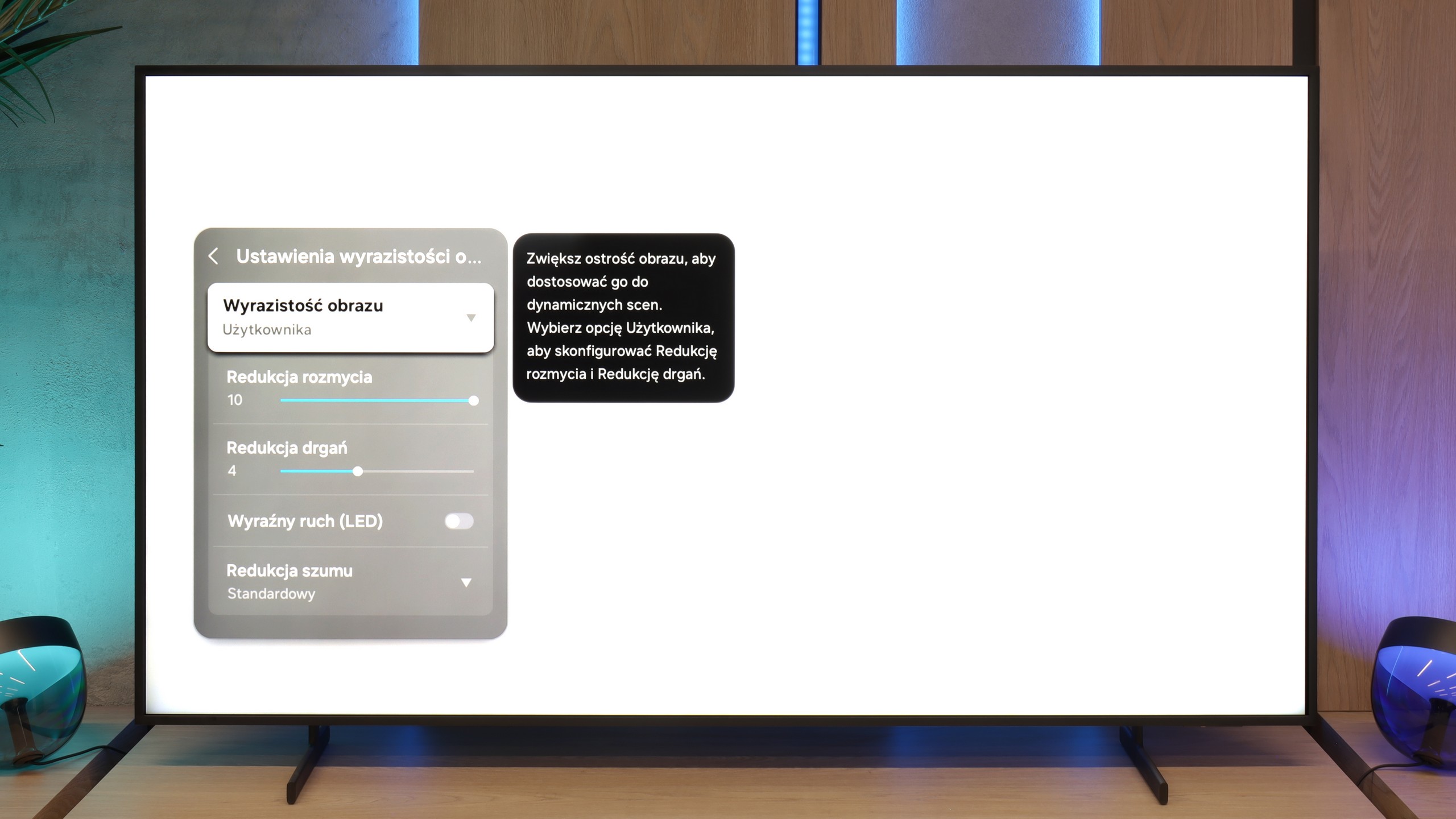
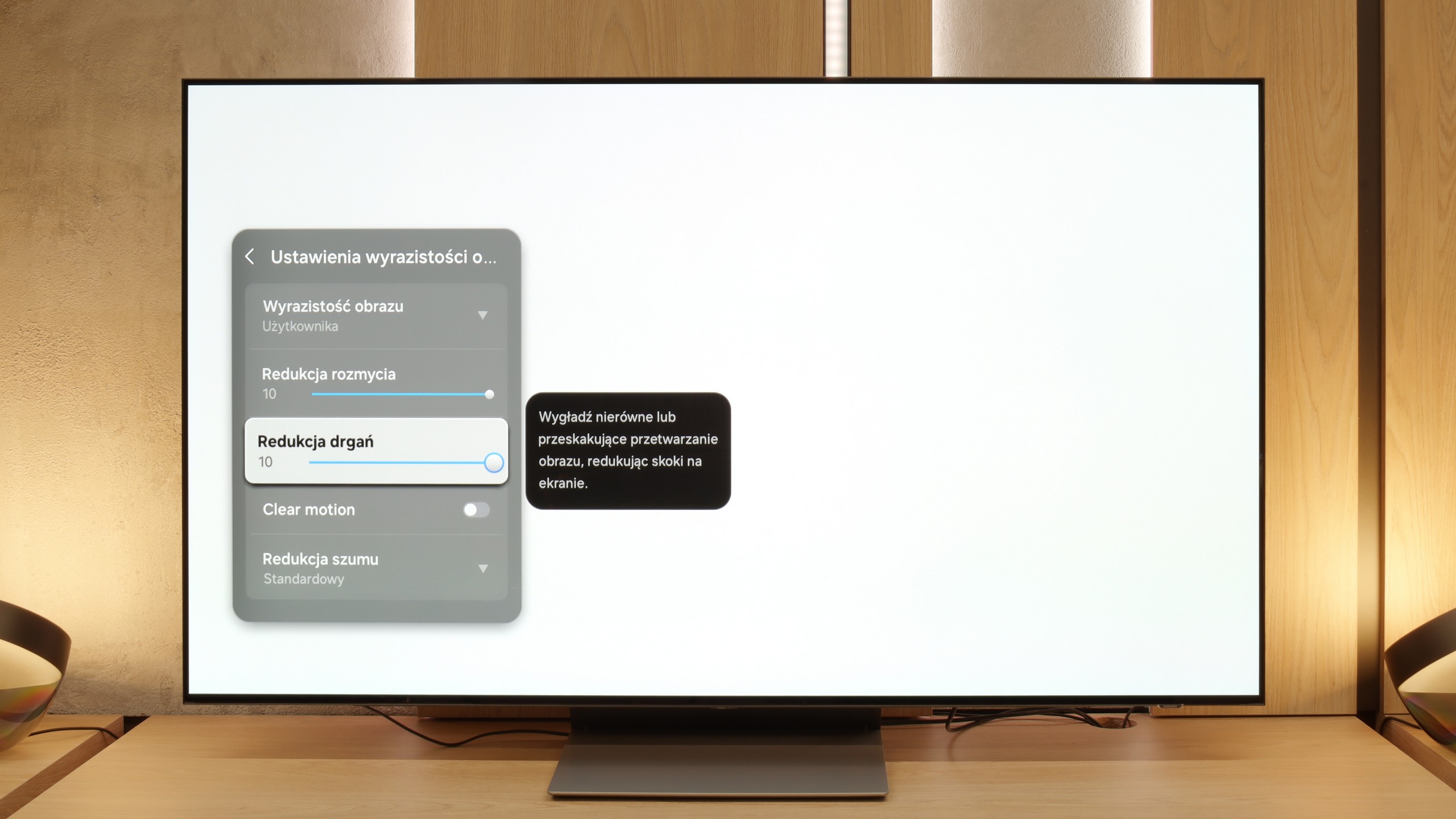
Blur (native resolution, maximum refresh rate):
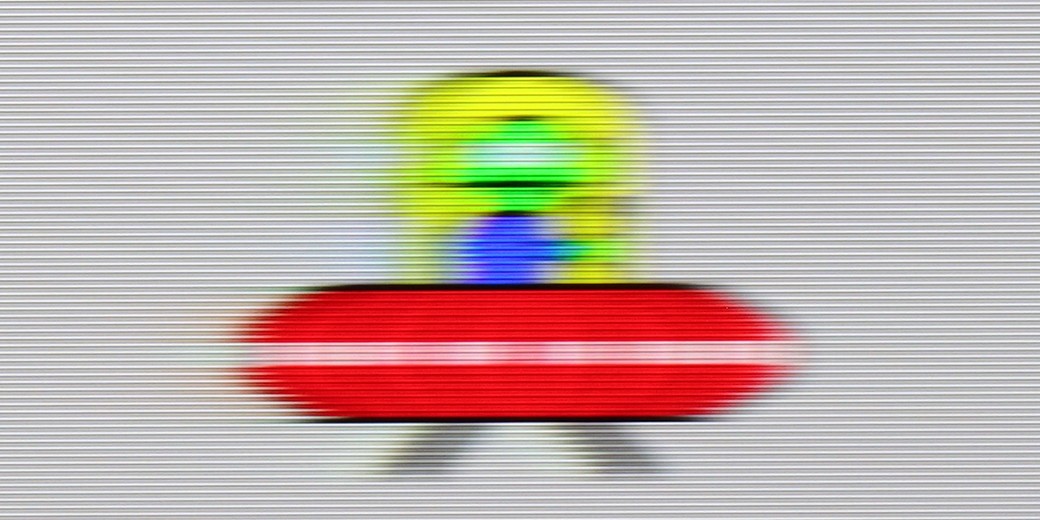
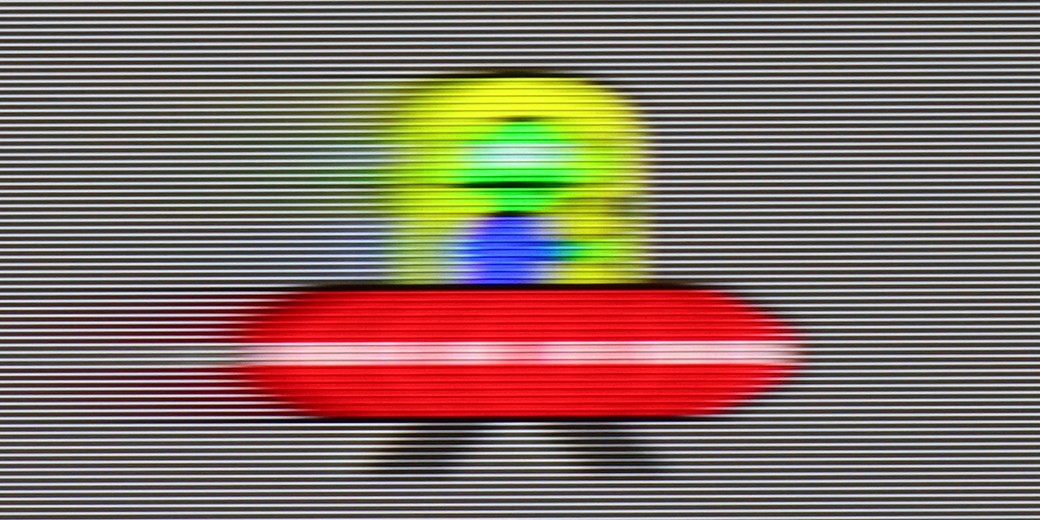
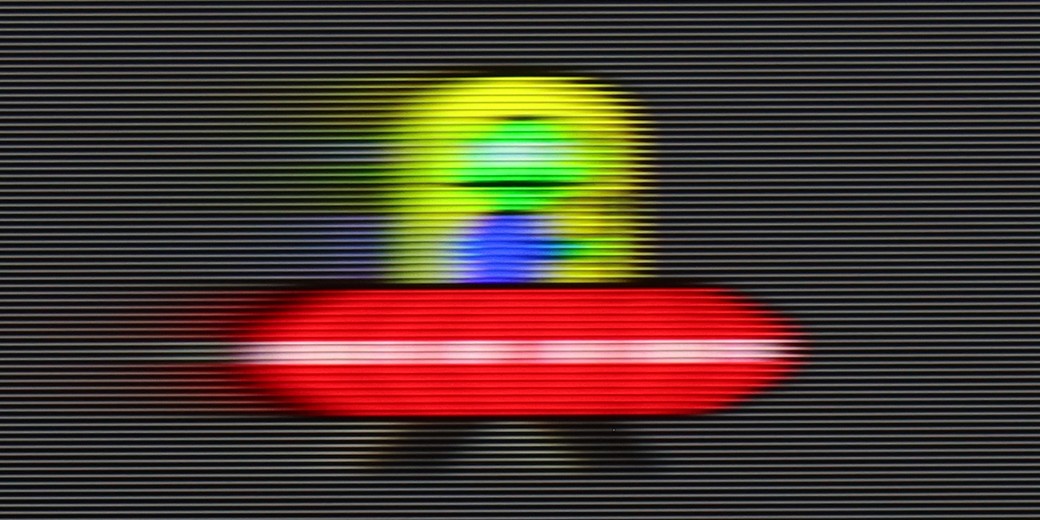



Blur (BFI function enabled):
Image flickers in this mode



Image flickers in this mode



Smużenie (4K@144Hz):

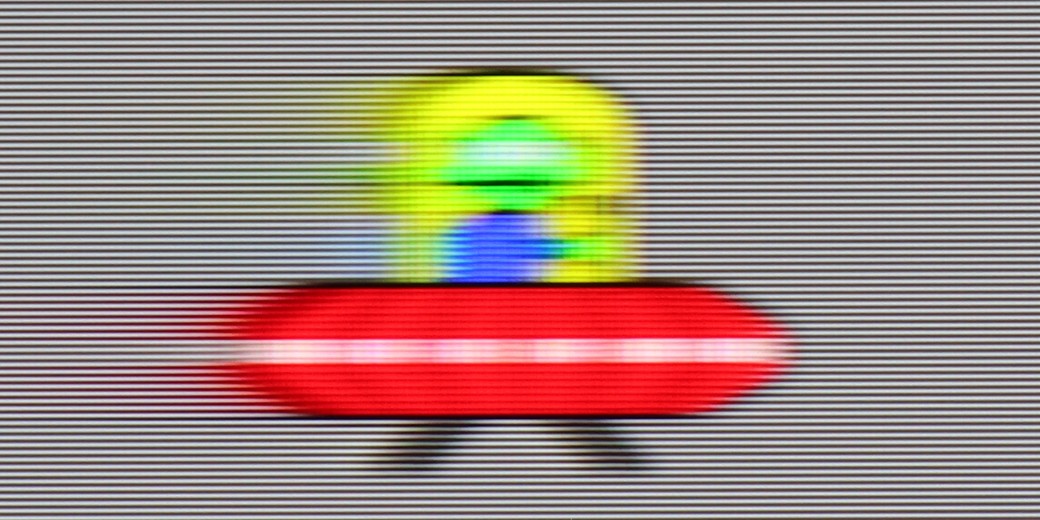
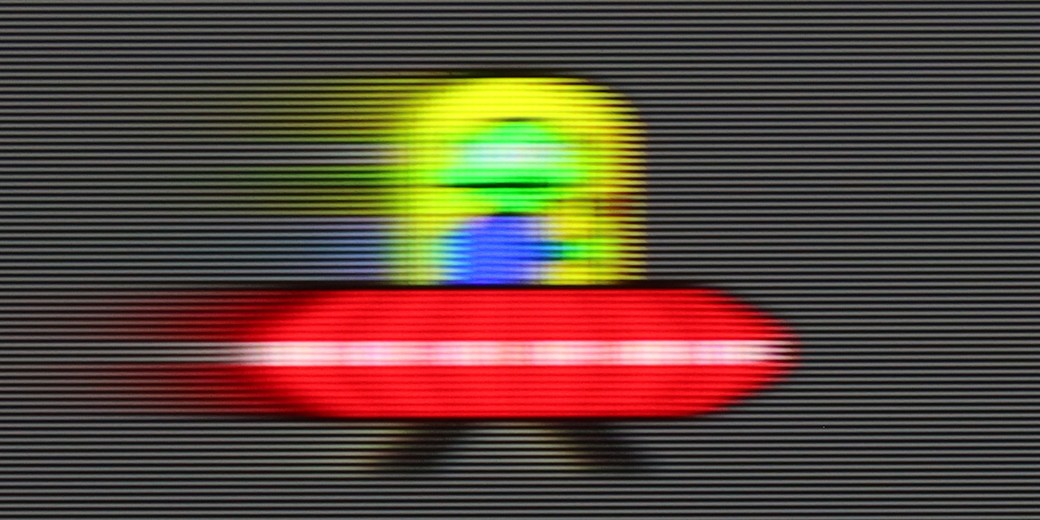
Smużenie (4K@144Hz):



The smoothness of motion in The Frame Pro is ensured not only by the panel, which operates with a refresh rate of up to 144 Hz, but also by the image processor and the smoothing system. It is thanks to this that we can adjust the way we display movies or sports broadcasts to our own preferences. Available are sliders for motion blur reduction and judder reduction – the first function improves the sharpness of fast movements, while the second allows for softening the "jumping" image effect during camera pans. Therefore, everyone can choose between a cinematic character of motion and a smoother, more "television-like" style.
S90F is an OLED with a refresh rate of 144 Hz, but in practice, what matters most is how it performs at 120 Hz, as this frequency is the most significant when watching sports. The QD-OLED panel is no different in this regard from WOLED panels—the pixel response is almost instantaneous, allowing motion to be rendered with surgical precision. The effect is easy to predict. The image is practically free of ghosting, making gaming on consoles, matches, or other sports broadcasts a great pleasure on the S90F.
Fans of movies and series are not forgotten either. Like every Samsung TV with a refresh rate of 120 Hz and above, the S90F is equipped with a proprietary motion smoother called "Image Clarity." Here, we find two sliders—motion blur reduction and judder reduction—that allow you to improve the fluidity of materials recorded at 24 frames and adjust the effect to your personal preferences.
Console compatibility and gaming features
8.2/10
9.6/10
- ALLM
- VRR
- VRR range48 - 144Hz48 - 144Hz
- Dolby Vision Game Mode
- Correct implementation of HGIG
- 1080p@120Hz
- 1440p@120Hz
- 4K@120Hz
- Game bar
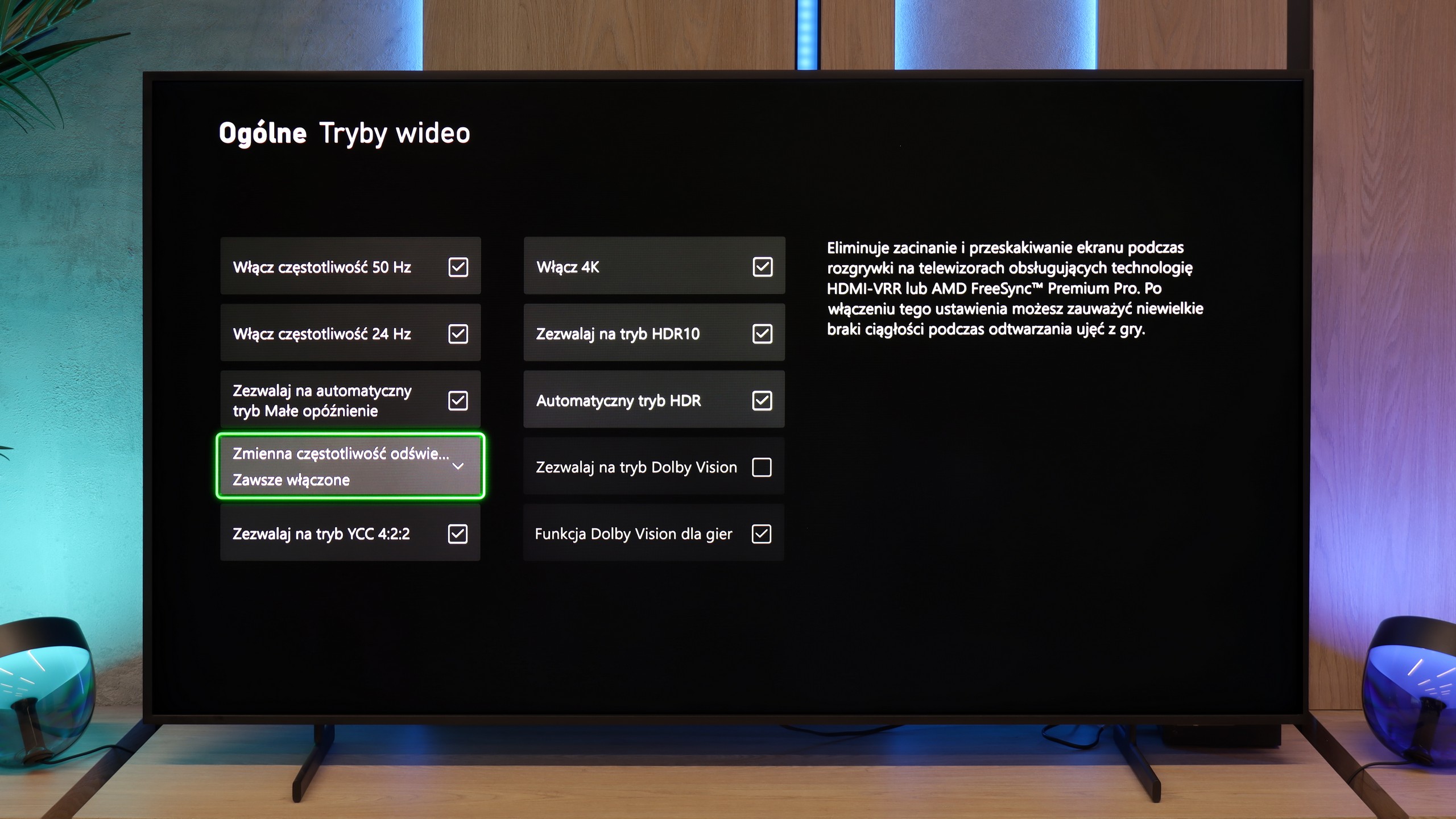
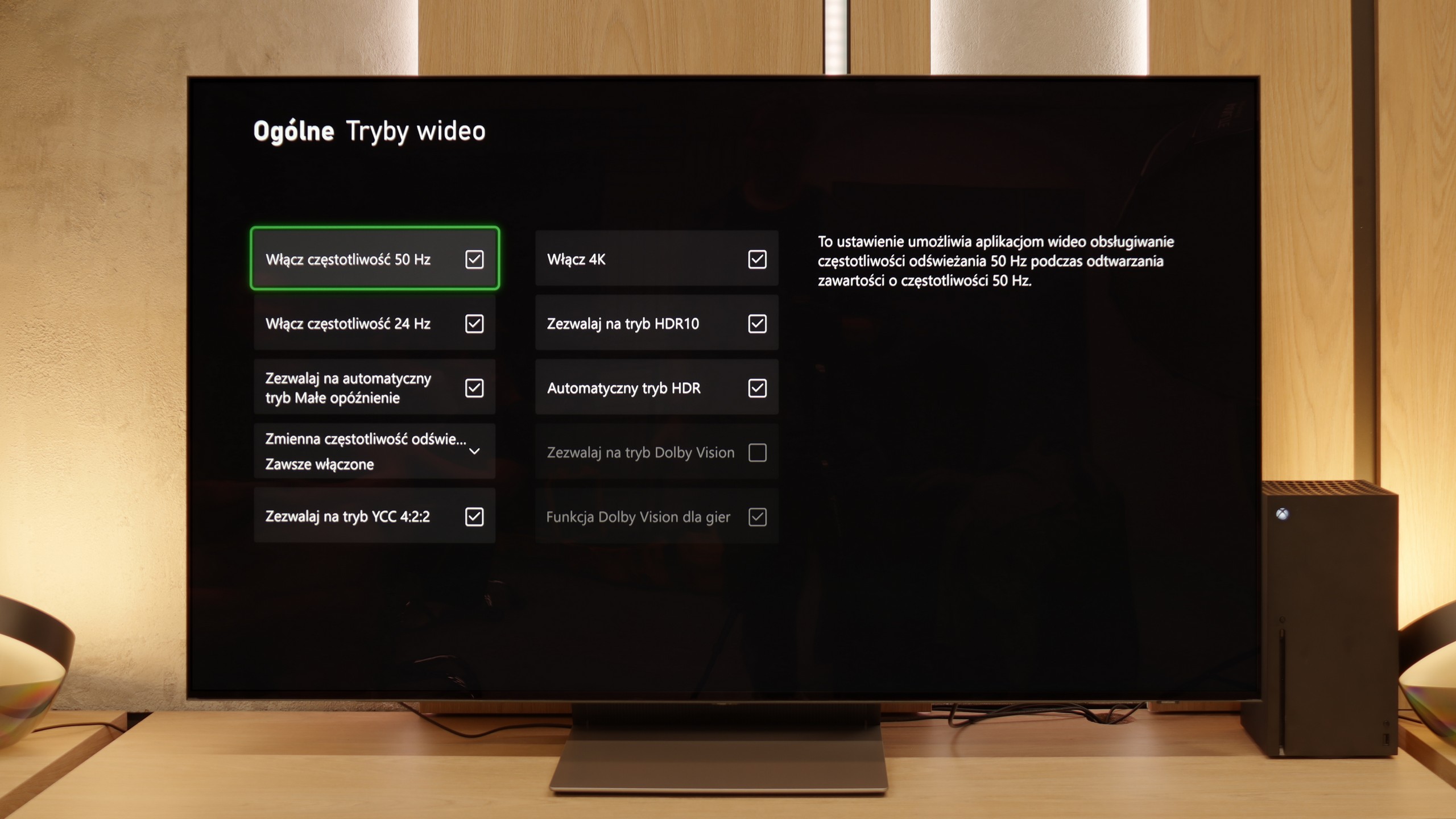
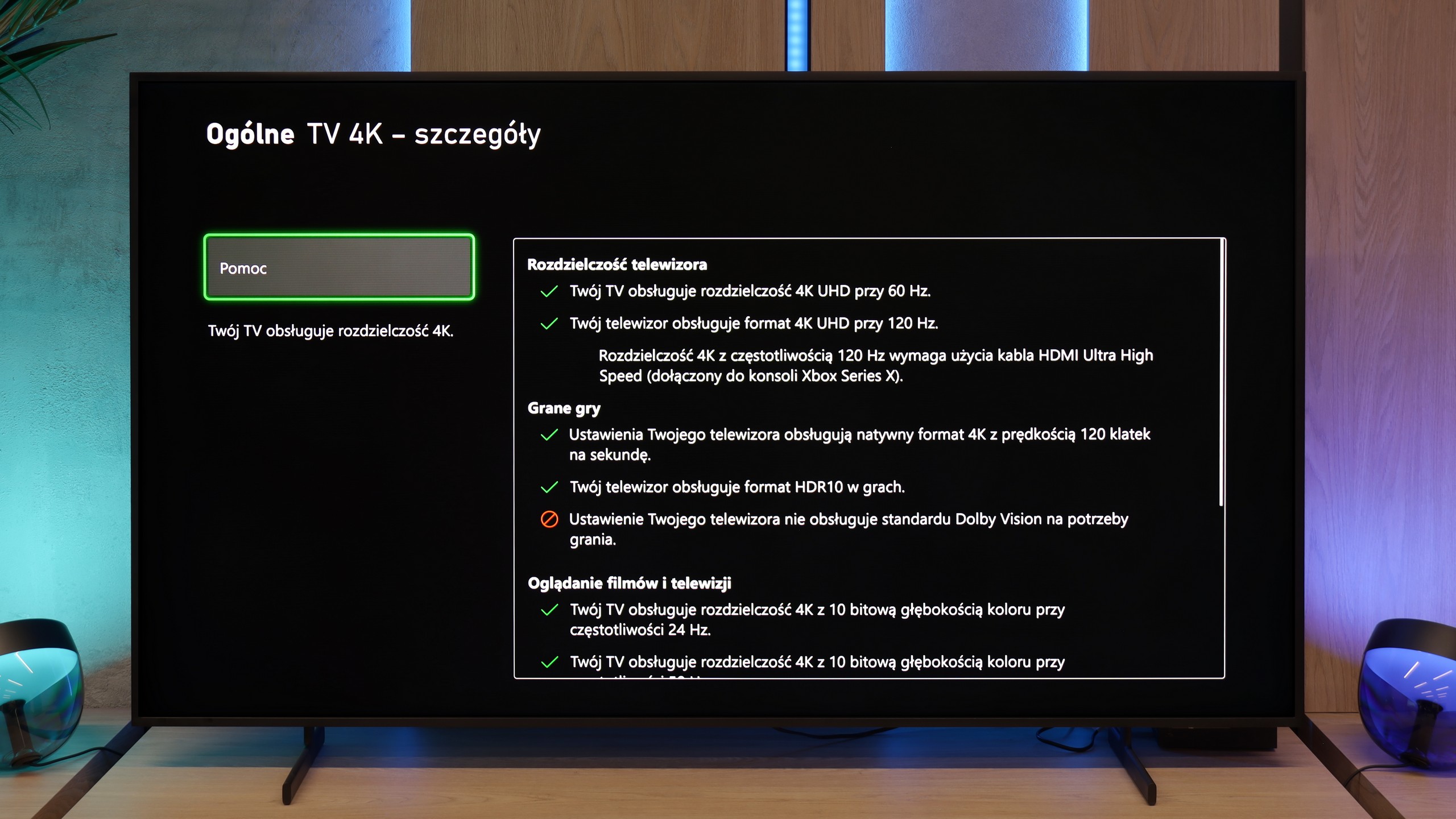
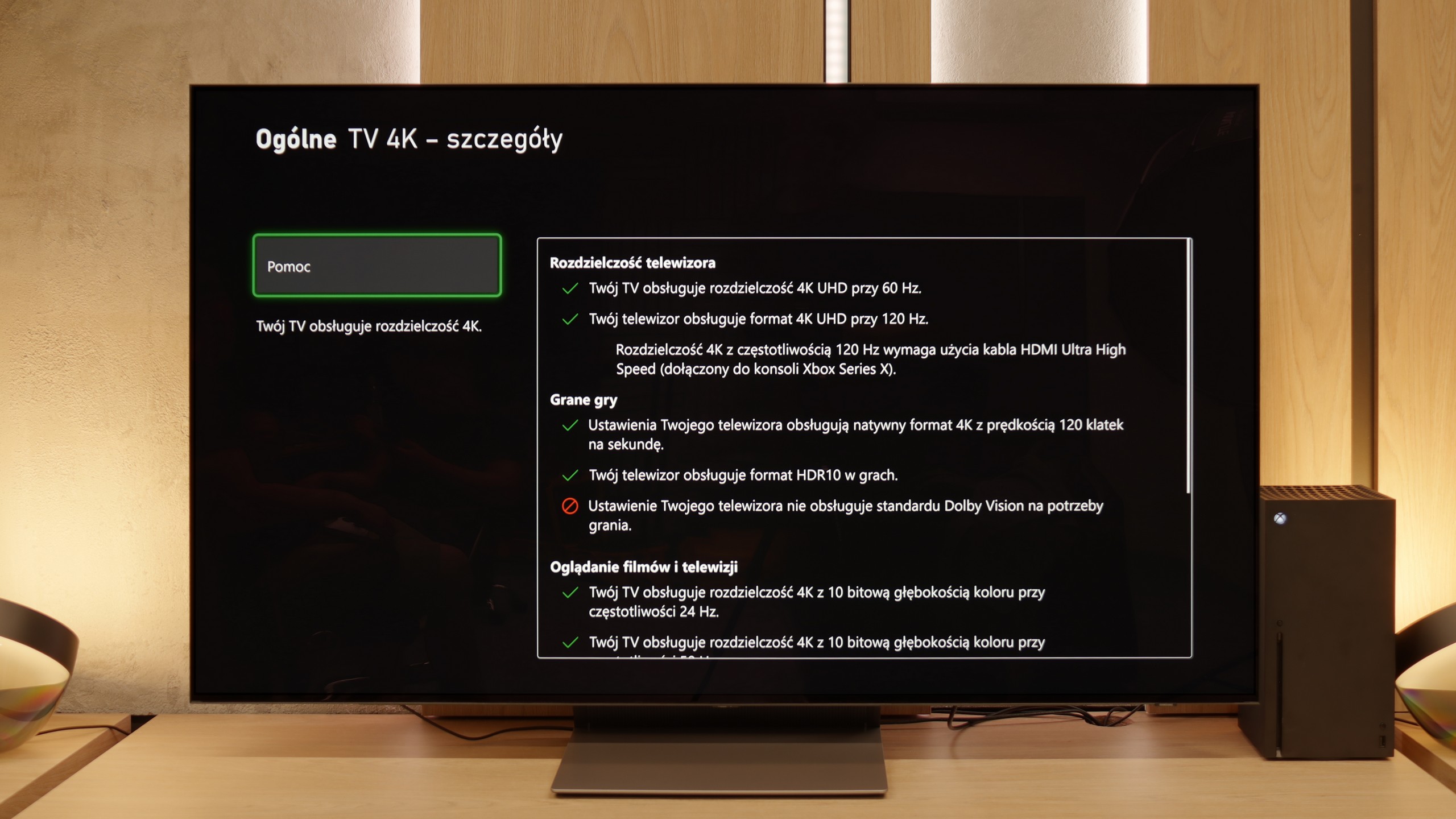
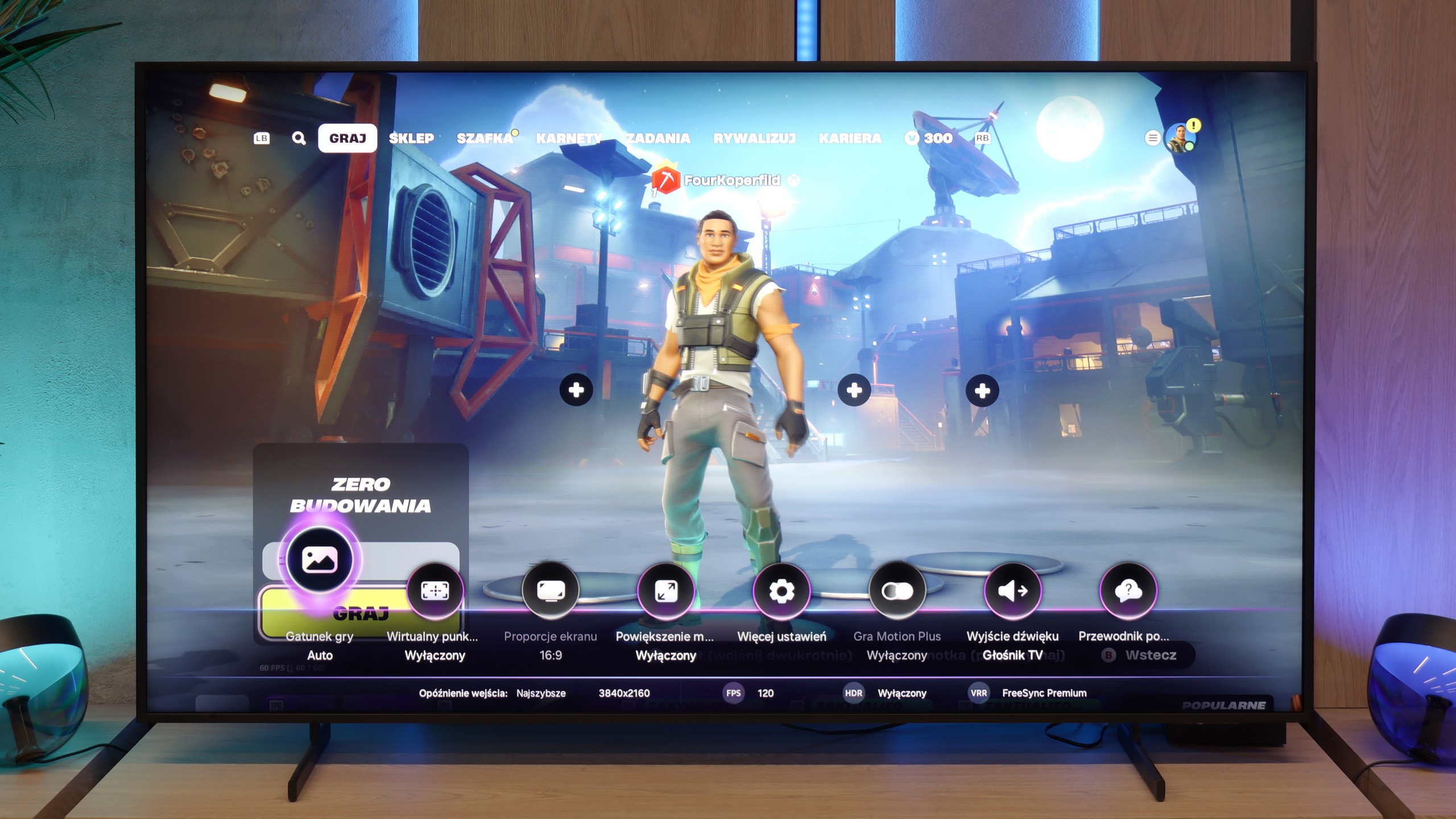
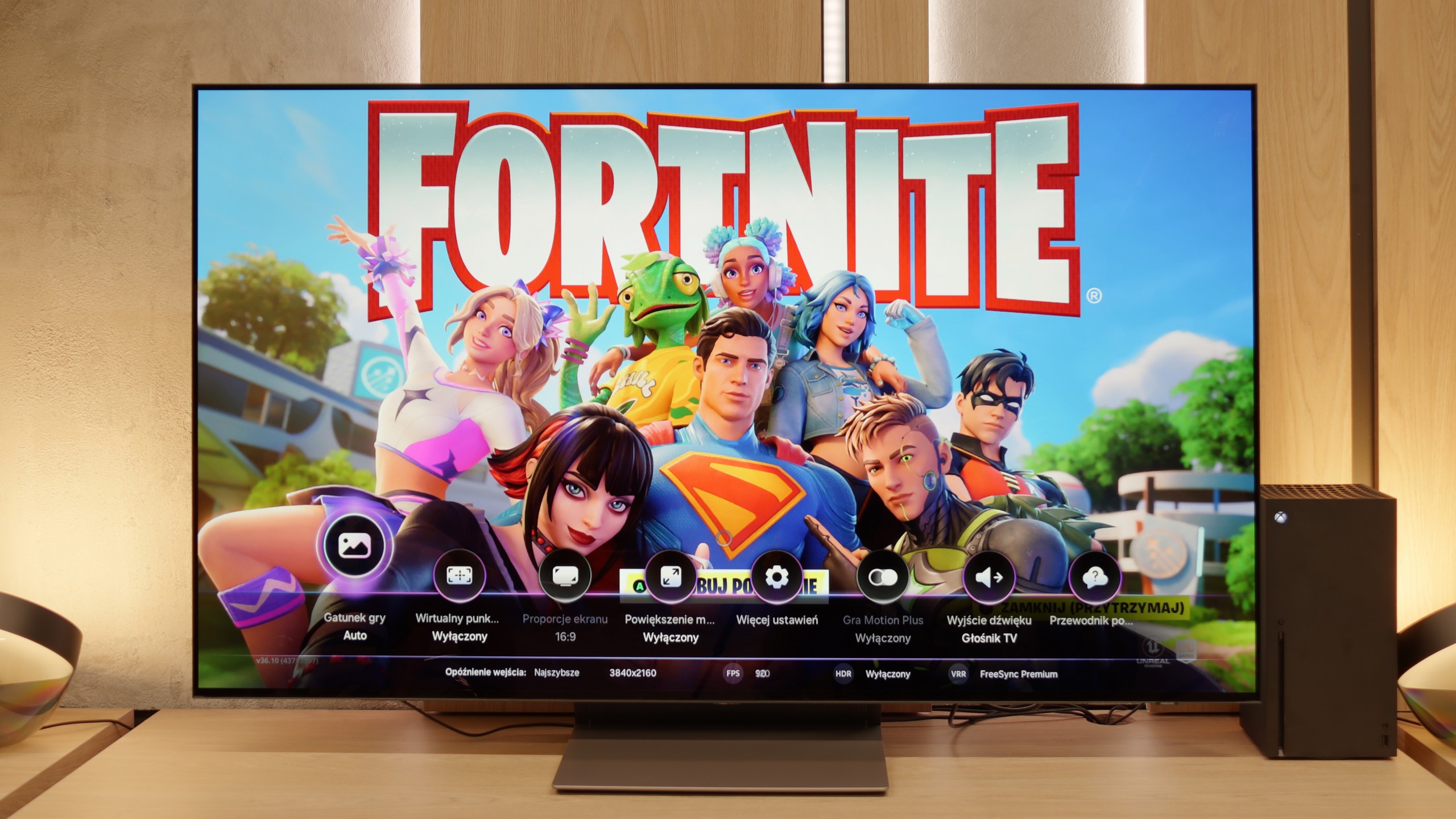
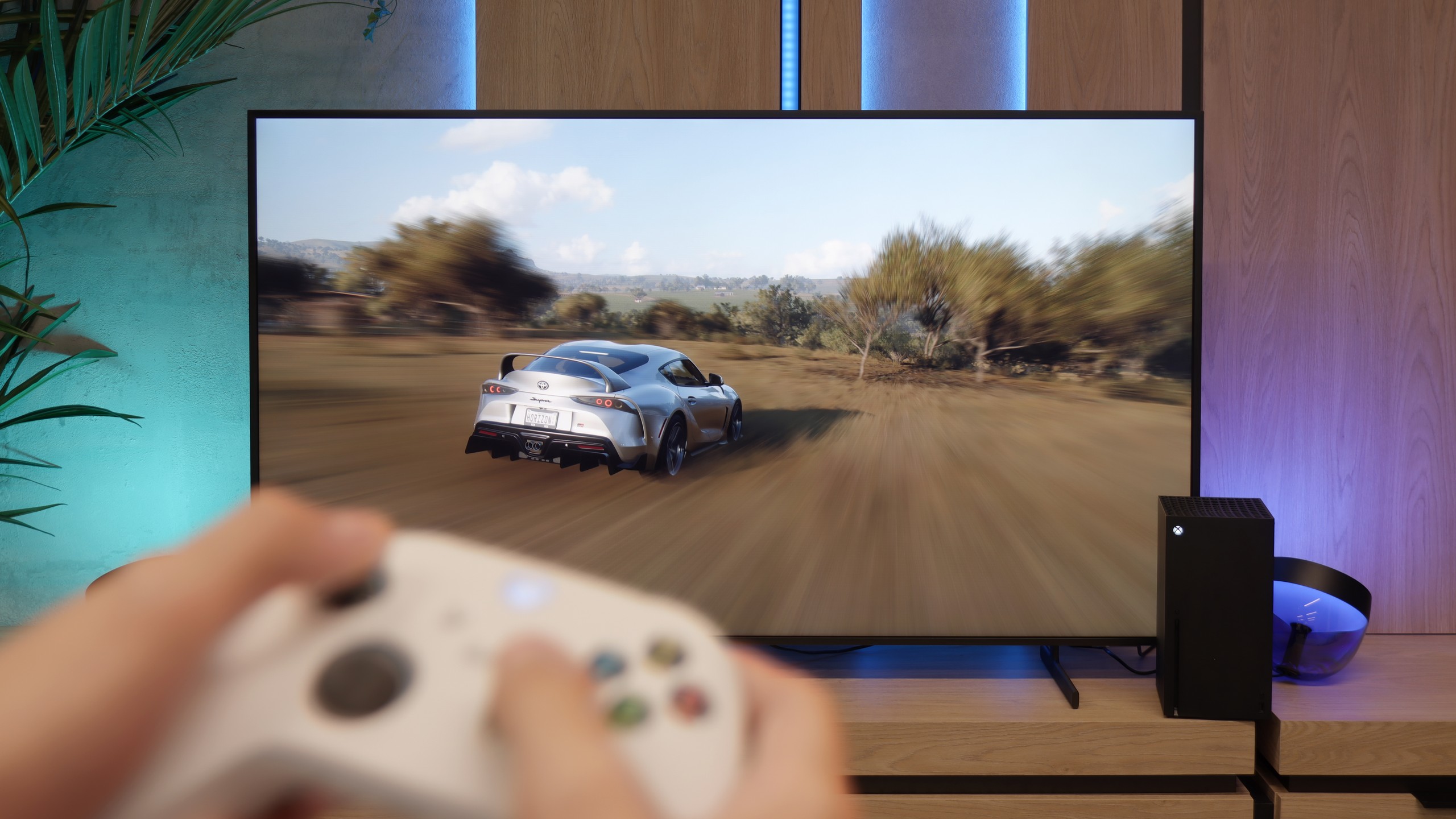
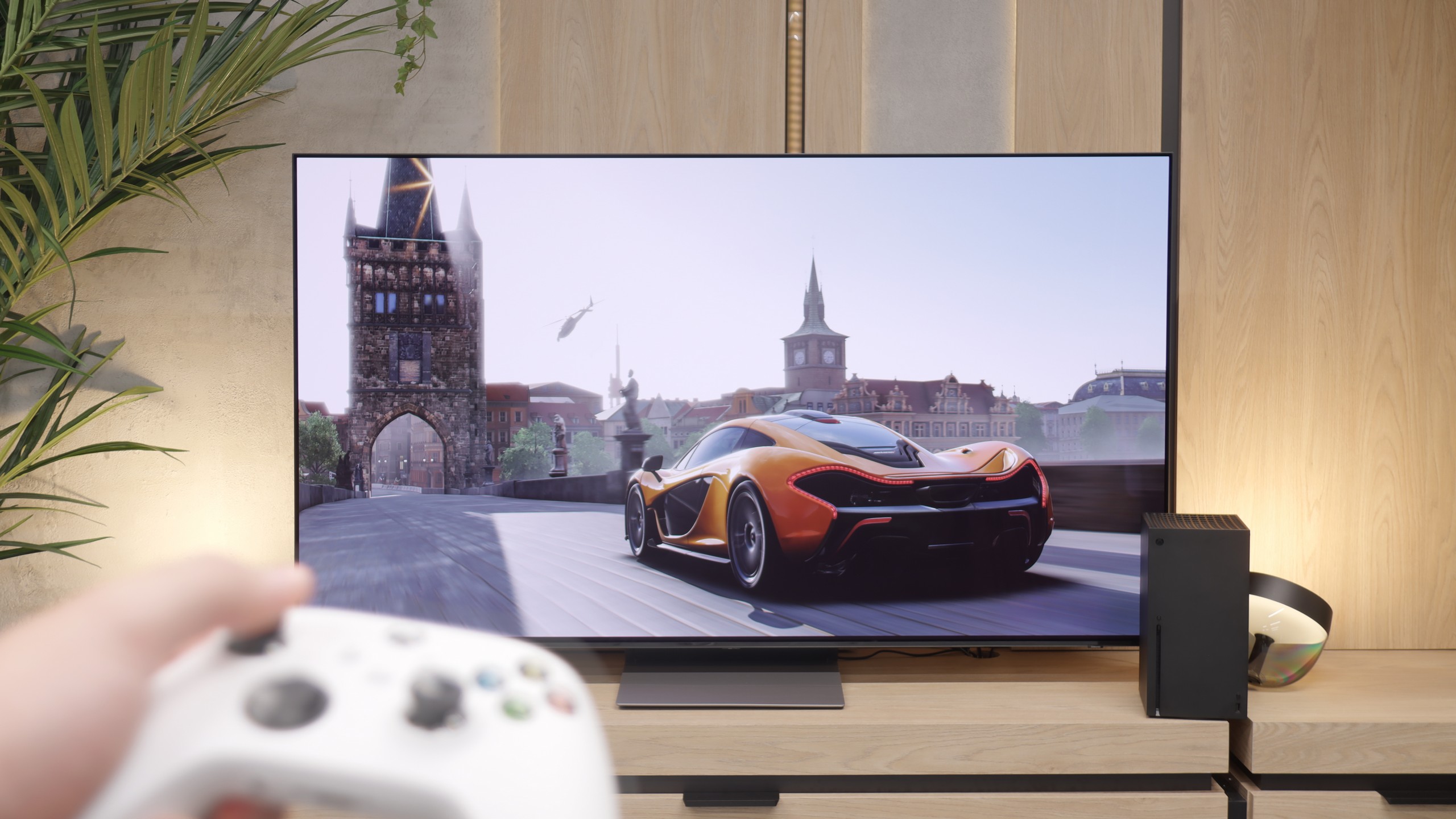
Samsung The Frame Pro doesn’t pretend to be just a “living room” television; here, gamers will also find something for themselves. The manufacturer has ensured a full suite of gaming features: we have support for variable refresh rate (VRR), automatic low latency mode (ALLM), refresh rates up to 144 Hz, and compatibility with both G-Sync and FreeSync Premium Pro. Additionally, there’s the well-known Game Bar panel, which is a quick menu where you can check key parameters on the fly – from refresh rates to active image processing modes. Are there any downsides? Yes, The Frame Pro doesn’t support Dolby Vision in gaming mode, but it's hard to consider this a serious issue – most gamers use HDR10 anyway... so, the HGIG mode. Exactly. The biggest surprise turned out to be the latest software update. Samsung… completely removed this option from The Frame PRO. In practice, this means that the TV independently interprets HDR tone mapping in games, and the user has no ability to enable settings designed for consoles. This is a step backward that may disappoint more informed gamers expecting full compliance with HGiG guidelines. We just hope that this mistake will be quickly corrected.
Interestingly, The Frame Pro also features an atypical arrangement of HDMI 2.1 ports. We have as many as five available – four are located in the One Connect module, and the fifth, in micro HDMI version, is directly on the TV. This solution is quite unconventional, but very practical. Samsung clearly suggests that this is the port to connect your console or computer. Why? Because it minimizes potential delays associated with communication through the wireless One Connect, and in gaming, every millisecond matters. We wrote separately about input lag, but it can be revealed here that by connecting equipment directly to the TV, we achieve the absolute maximum response speed.
S90F is a television that truly brings a lot of joy when gaming. Right off the bat, we get four full-fledged HDMI 2.1 ports, which means you can connect all consoles and PCs without having to figure out which device takes priority. This is a convenient and practical solution that is not a given with other manufacturers. Additionally, there are key features such as the automatic game mode (ALLM), which switches the screen to low-latency settings, and VRR frame synchronization working over a wide range from 48 to 144 Hz. This ensures that the picture remains smooth regardless of whether we are playing fast-paced online shooters or calmer story-driven titles. Another noteworthy feature is the Game Bar – a panel that allows quick access to several useful additions. For example, you can turn on an additional crosshair in the center of the screen, enlarge the minimap, or, in the case of a PC, change the aspect ratio. Finally, there is also the unique Game Motion Plus mode exclusive to Samsung. Its purpose is to smooth out older or less optimized titles, and it actually works quite well. Thanks to this mode, even less polished games can look better and provide more enjoyment than on other televisions that theoretically offer the same technical specifications.
Input lag
9.9/10
10/10
SDR
HDR
Dolby Vision
The Frame Pro in wired mode achieves truly excellent results. Latencies range from 9 to 14 ms, ensuring smooth and instant reactions in games. These are values that can easily be considered reference – even in dynamic titles, the action unfolds without delays, and the controls are precise and predictable. The situation changes when the wireless One Connect module comes into play. While it allows for hiding cables and enjoying greater freedom of room arrangement, it significantly worsens input lag results. In tests conducted at a distance of 2 to 3 meters from the television, with no furniture obstacles, the values jumped to as high as 50ms. While this is acceptable for watching movies since input lag doesn’t concern us at all, it becomes problematic in games and greatly spoils the experience. It’s somewhat of a paradox – on one hand, we have a television that offers some of the best results on the market in wired mode, while on the other hand, Samsung promotes a solution that proves quite detrimental for gamers. And after all, the console is one of the key devices we usually connect to the television...
For the sake of order, we present our wireless measurements at a distance of 2-3m:
SDR | HDR |
|---|---|
1080p60 Hz: 39 | 2160p60 Hz HDR: 40 |
1080p120 Hz: 25 | 2160p120 Hz HDR: 25 |
2160p60 Hz: 40 | |
2160p120 Hz: 25 |
In terms of lag, the S90F performs exceptionally well. With 120 Hz content, it’s about 5 ms, and with 60 Hz, it’s about 10 ms. In practice, this means an immediate response to the controller, mouse, or keyboard – without the feeling that something is slowing down the gameplay!
Compatibility with PC
8.4/10
8.6/10
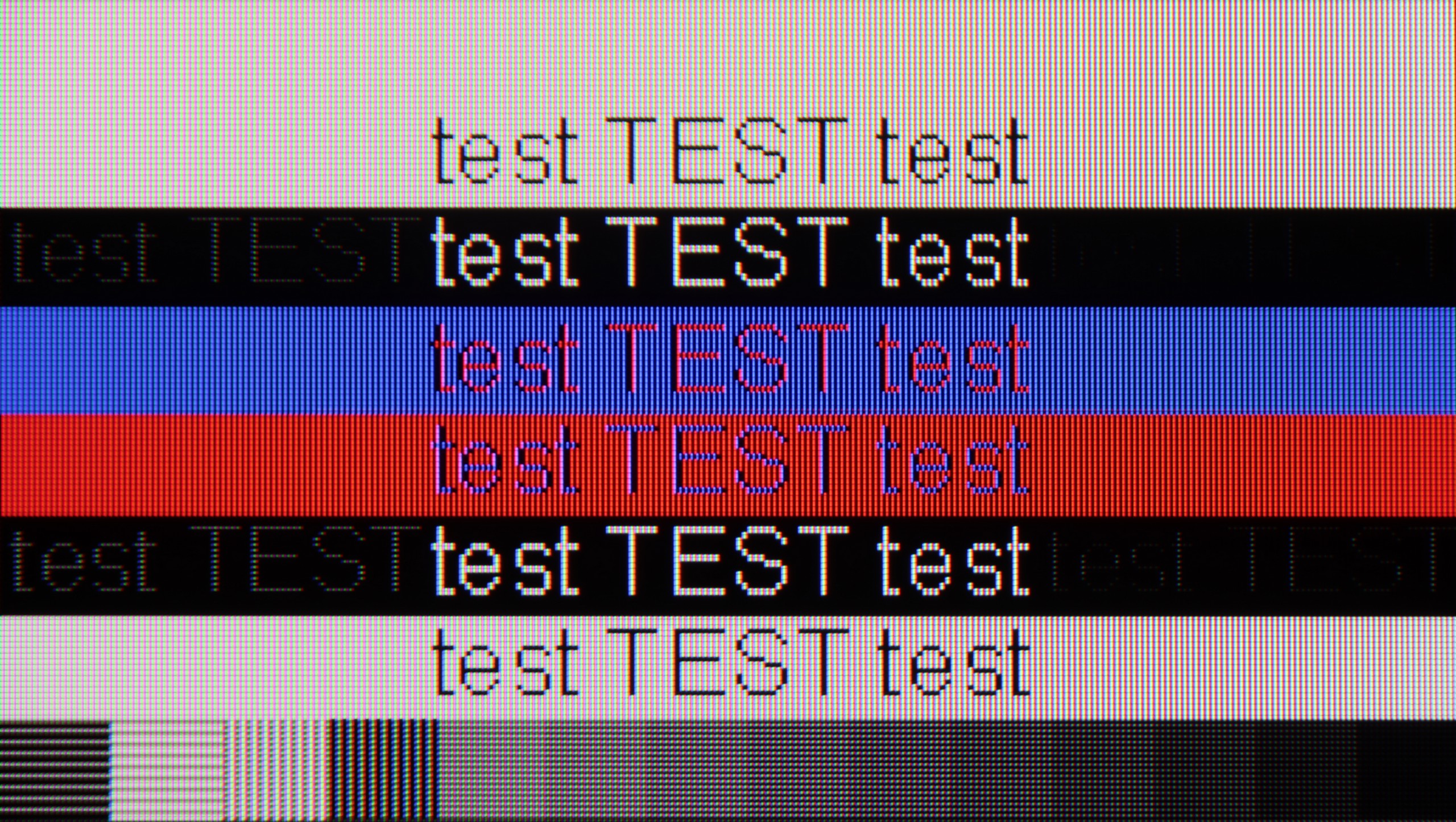
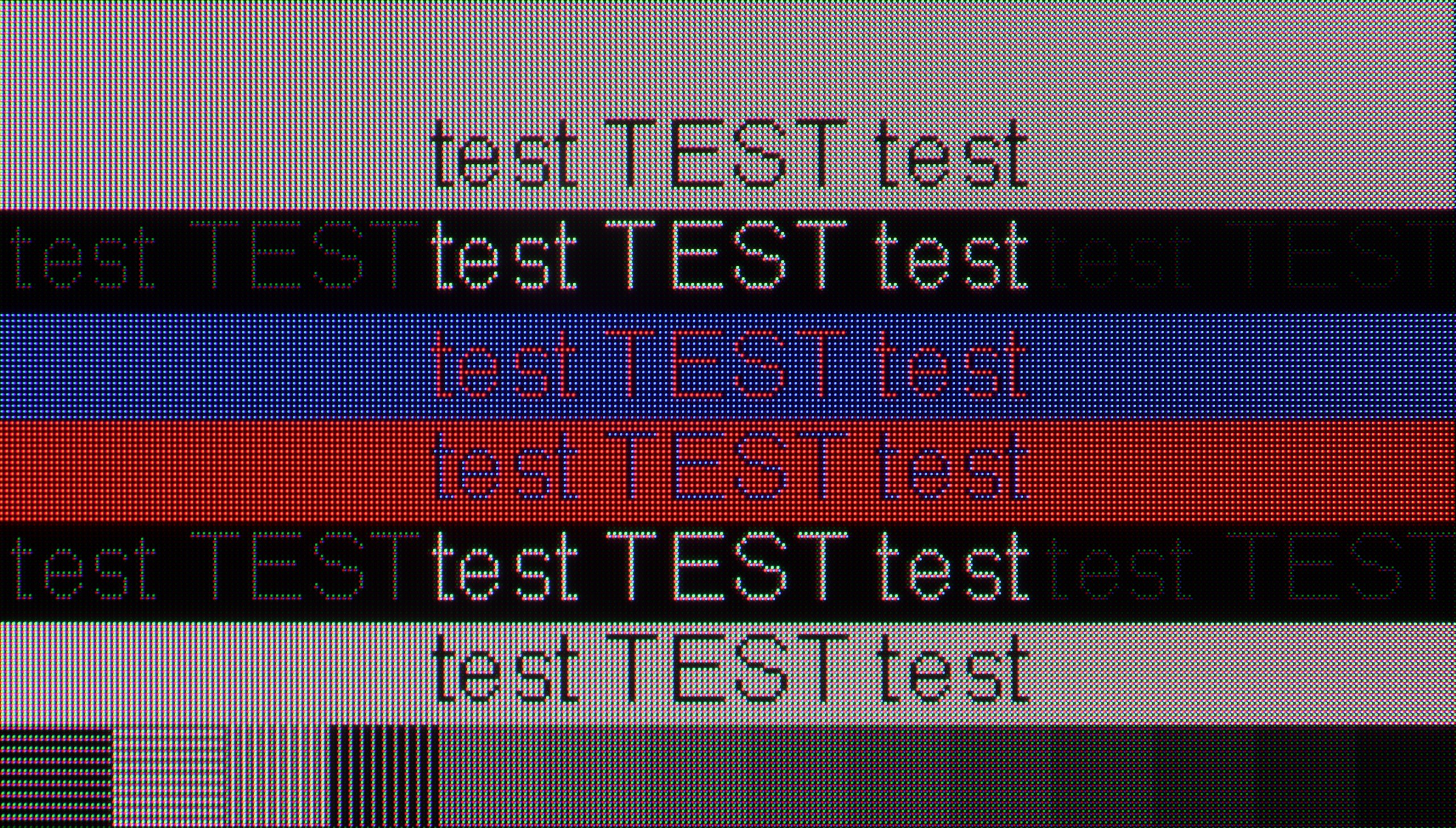
Connecting The Frame Pro to a computer via a wired connection is basically no rocket science – it works as it should. The image is clear, the fonts look good, you can calmly handle everyday work in Word or Excel, and then launch a game and it’s still okay. The real fun begins when we use the wireless module. And this is where the entire paradox of this television comes out again – a solution that was supposed to make life easier in theory can actually make it quite frustrating in practice. It's not just about the aforementioned delays, which can be immediately felt when using the mouse, but also about the clarity of the image itself. The fonts start to look simply worse, at times you can see some kind of delicate stripes, and the letters lose sharpness, and suddenly working with text becomes simply exhausting. And it's really strange that such a simple thing as displaying letters on the screen can fall apart because of the wireless module. So if someone plans to use The Frame Pro with a computer – whether for work or gaming – it’s really worth connecting it via a wired connection right away. Because otherwise, you can become very quickly frustrated, and instead of enjoying the large screen, you’ll feel like your eyes are fighting with the television for every paragraph of text.
The S90F, even in the 65-inch variant, works great as a large monitor for PC. The most benefits, of course, go to gamers – the television supports refresh rates up to 144 Hz, as well as frame synchronization with Nvidia graphics cards (G-SYNC) and AMD (FreeSync). The difference compared to WOLED panels lies in the distinctive "diamond" pixel arrangement in QD-OLED. In practice, this can affect the display of fine text – some letters at the edges may have slightly jagged shapes. On the other hand, in WOLED matrices with a layout of four subpixels, text can be less precise, so each variant has its minor specifics. In both cases, however, the television is very well suited for both gaming and occasional computer work.
Viewing angles
3.1/10
9.8/10
The Frame Pro uses a VA panel, and that immediately means that viewing angles are not one of its strengths. It’s enough to sit slightly to the side to see how the screen starts to lose quality – brightness decreases, colors fade, and blacks that look solid from a central perspective suddenly resemble more dark gray velvet than deep pitch. This is most apparent at about a 40–45 degree angle – there, the image clearly brightens, and color saturation drops significantly. Overall, this is nothing new, as most LCD televisions with VA panels behave this way. At the cost of better blacks compared to IPS panels, we get worse viewing angles.
One of the things that immediately impresses in the S90F is its viewing angles. This is a huge advantage of QD-OLED panels – even if we are not sitting directly in front of the television, the image hardly changes. Colors remain vibrant, contrast is strong, and details are just as readable as when viewing from a central spot. So you can comfortably watch a movie with a group of people, spreading out across the entire living room, without worrying that someone will see a washed-out version of the image. OLEDs have always performed well in this category, and it’s one of their main advantages over traditional LCDs. However, in QD-OLED, the difference is even more noticeable – the image holds its quality even at a wide angle, where on WOLED panels, one can already see a slight loss of color intensity. Here, there is practically none of that.
TV efficiency during daytime
7/10
5.7/10
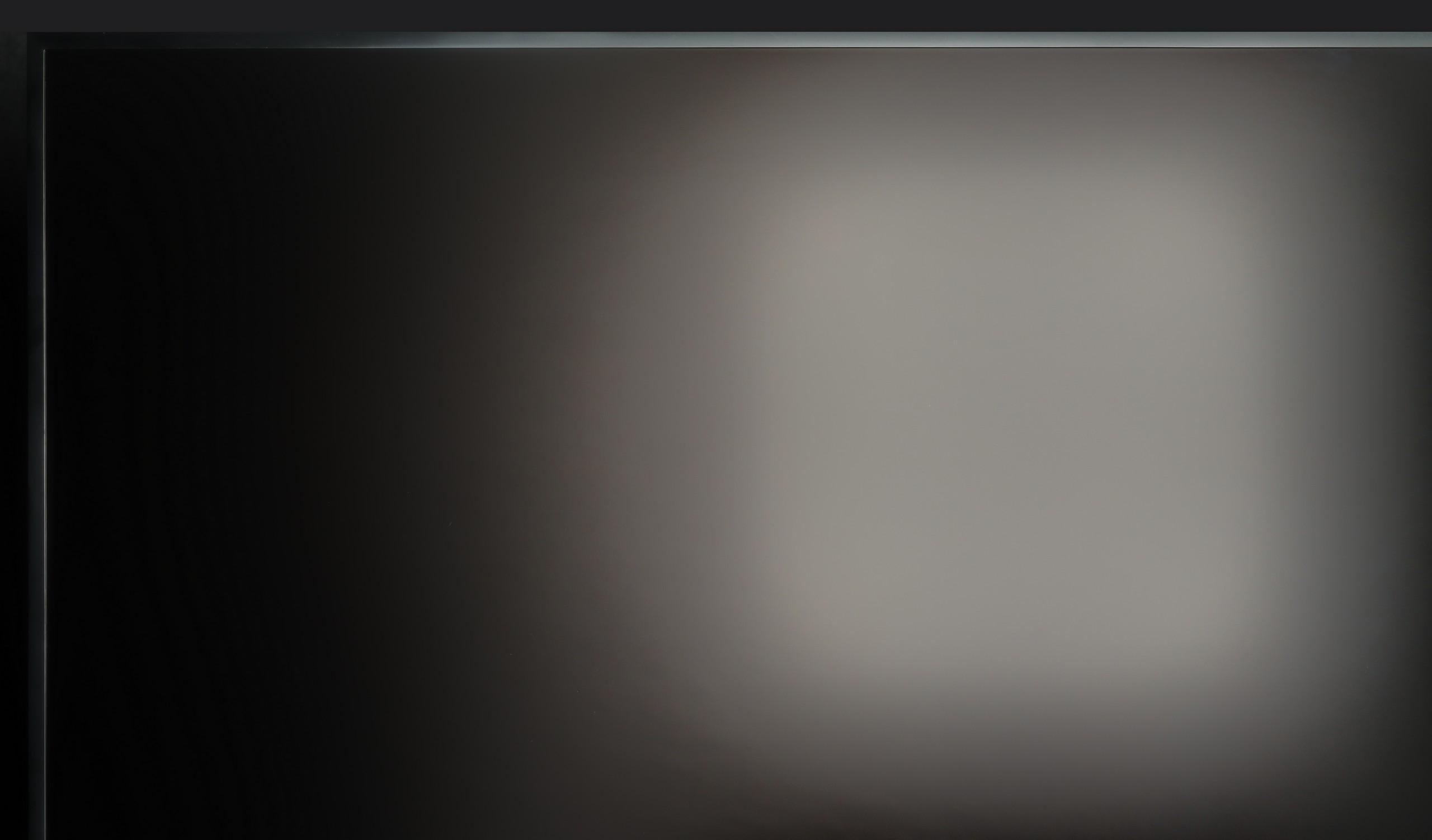
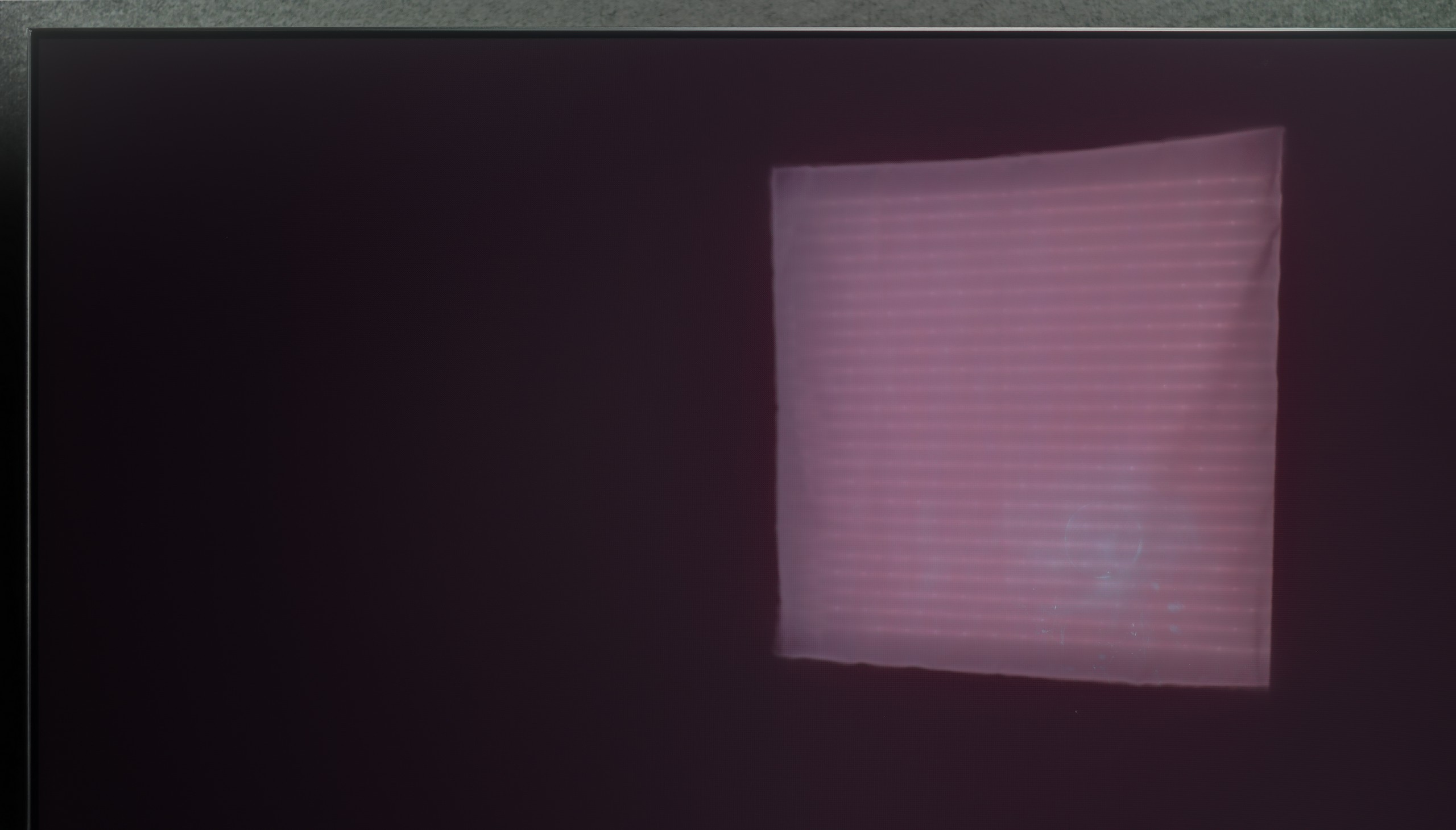

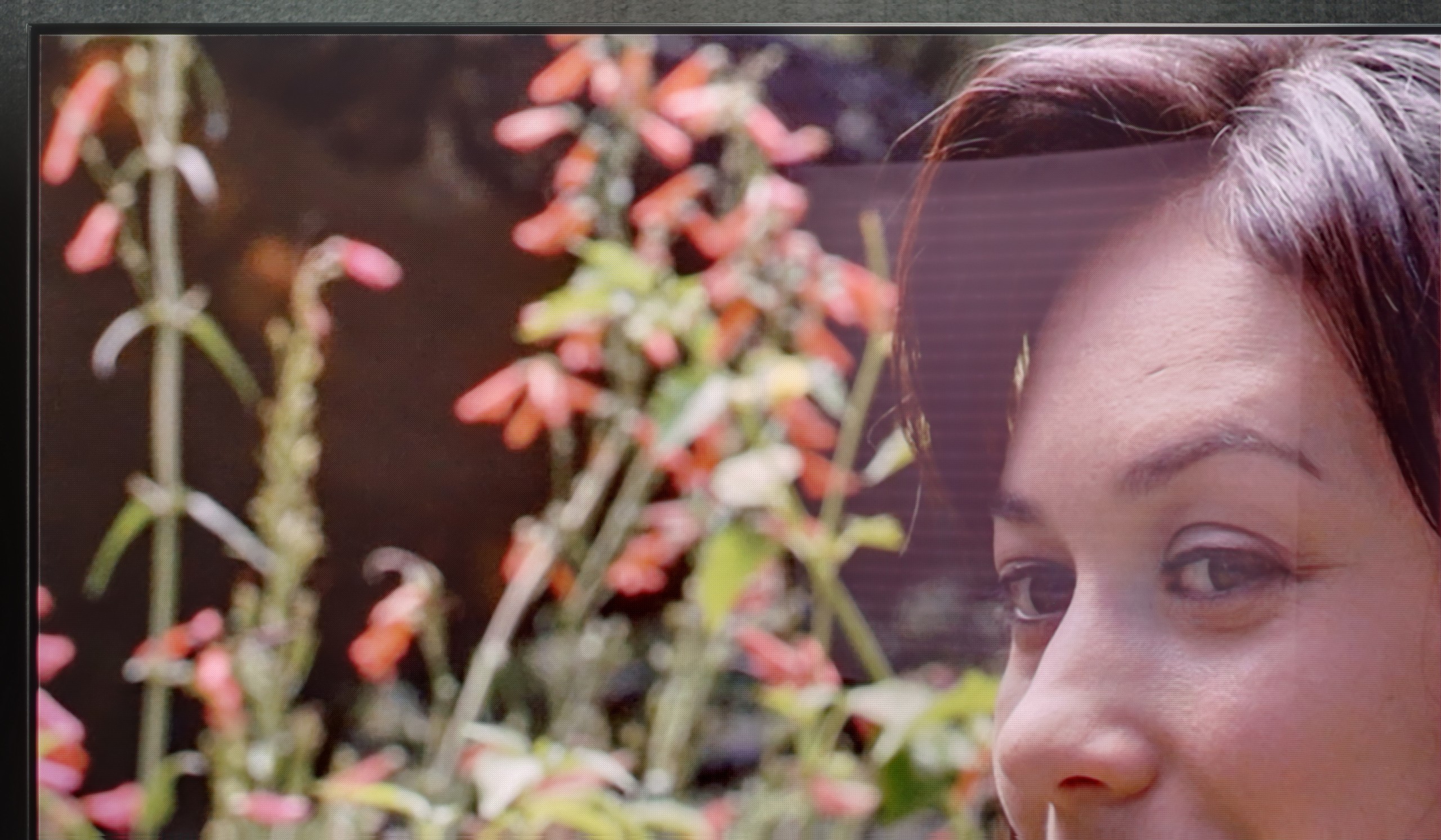
Matrix brightness
Average luminance SDR
Samsung OLED S90F (QD-OLED): 431 cd/m2
Samsung The Frame Pro: 614 cd/m2
The Frame series has stood out for almost a few years with its matte display coating, and The Frame Pro from 2025 is no exception. It is precisely because of this that you can be assured that light reflections will not annoy you even in a brightly lit living room. Samsung has refined this technology to near perfection over the years, and today, it can confidently be said that this is the best matte display we can find in televisions. Colors still look good and do not drastically lose saturation, as is the case with cheaper, Chinese designs. Black also remains at a decent level, although it must be admitted that in extremely bright lighting conditions, colors may slightly flatten and lose depth. However, this is a small price to pay for the complete lack of reflections on the screen – and this can be priceless in everyday use. Plus, the brightness must also be noted – about 600 nits in SDR mode makes the picture easily cut through daylight, and it will look satisfactory in most rooms.
QD-OLED matrices have their Achilles' heel – it is the reproduction of black in brightly lit rooms. The glossy coating used here handles reflections really well, definitely better than in WOLED panels that we had the opportunity to test. The problem is that in very intense daylight, black can take on a dark navy hue and loses its depth. Fortunately, in the evenings this phenomenon disappears completely, and the television displays an image that we expect from OLED – with perfect contrast and true black. As for brightness, the S90F performs quite well for a mid-range OLED. It will handle typical conditions without any issues, and the screen will look attractive even in a well-lit living room. Only in really extreme conditions, when the sun shines directly on the screen, might it be more difficult, but this is a common issue for all OLEDs in this price segment. On the other hand, better suppression of reflections means that for many people, QD-OLED will prove to be more comfortable for everyday viewing than classic WOLEDs, despite the fact that blacks don’t always look perfect on it.
Details about the matrix
Subpixel Structure:
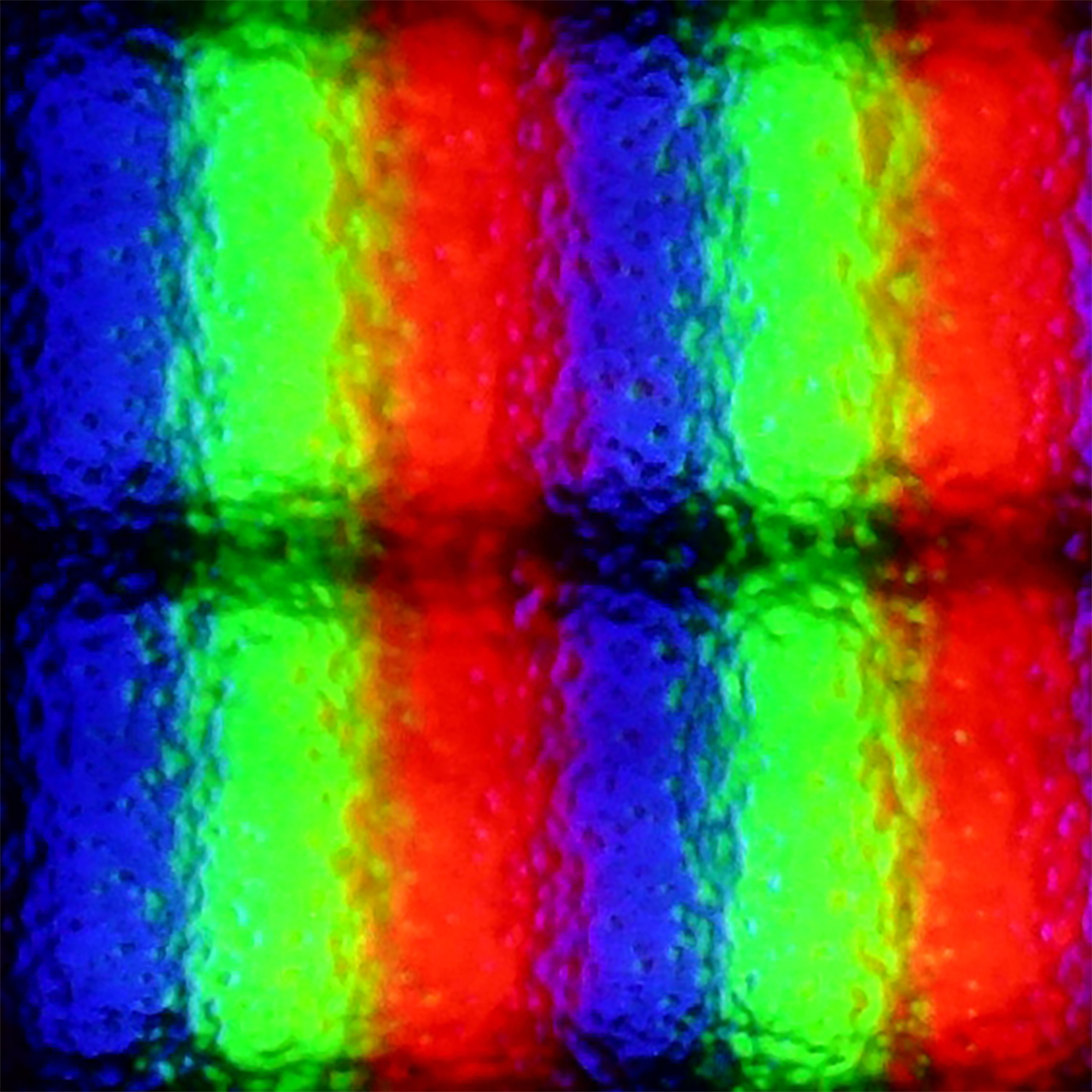
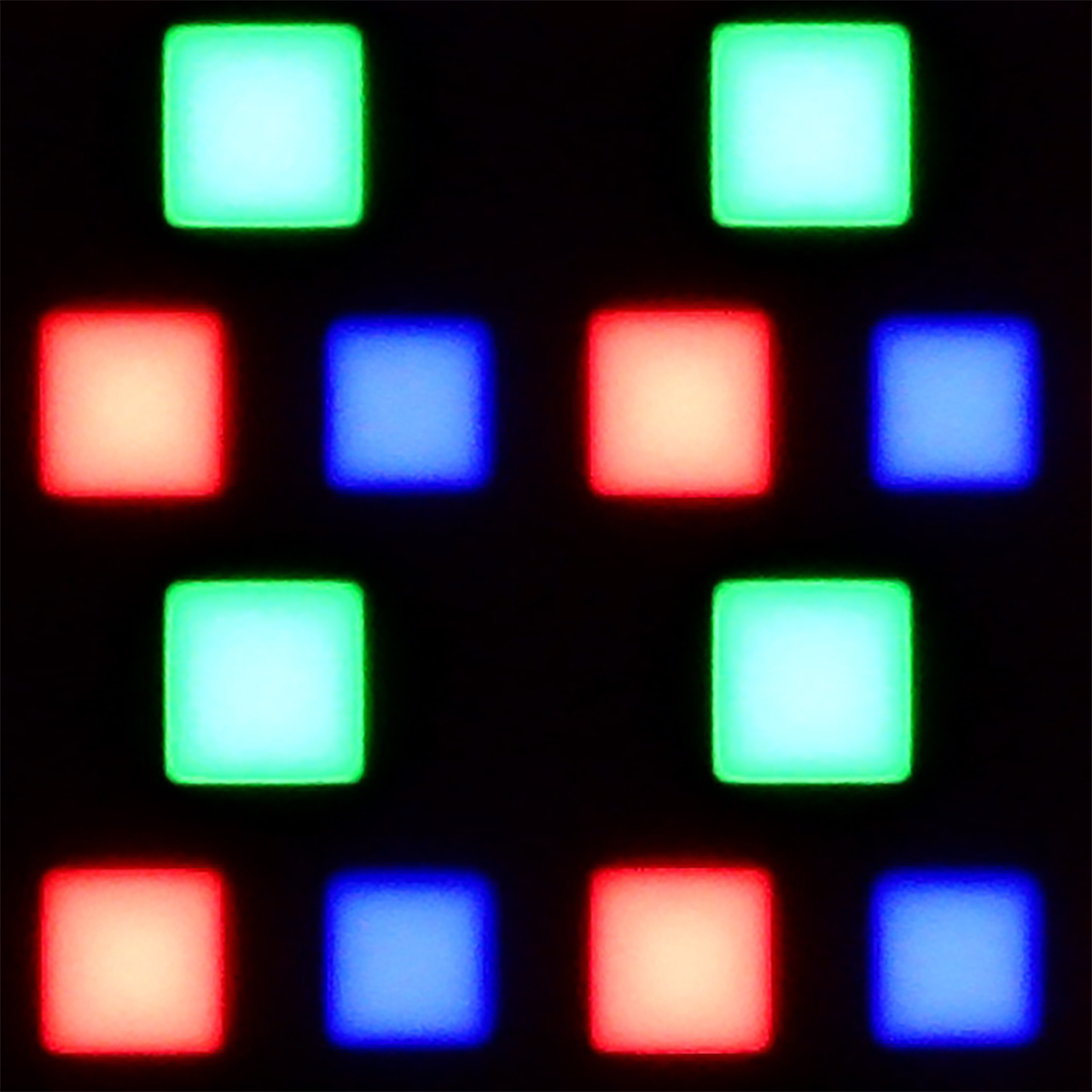
Panel uniformity and thermal imaging:
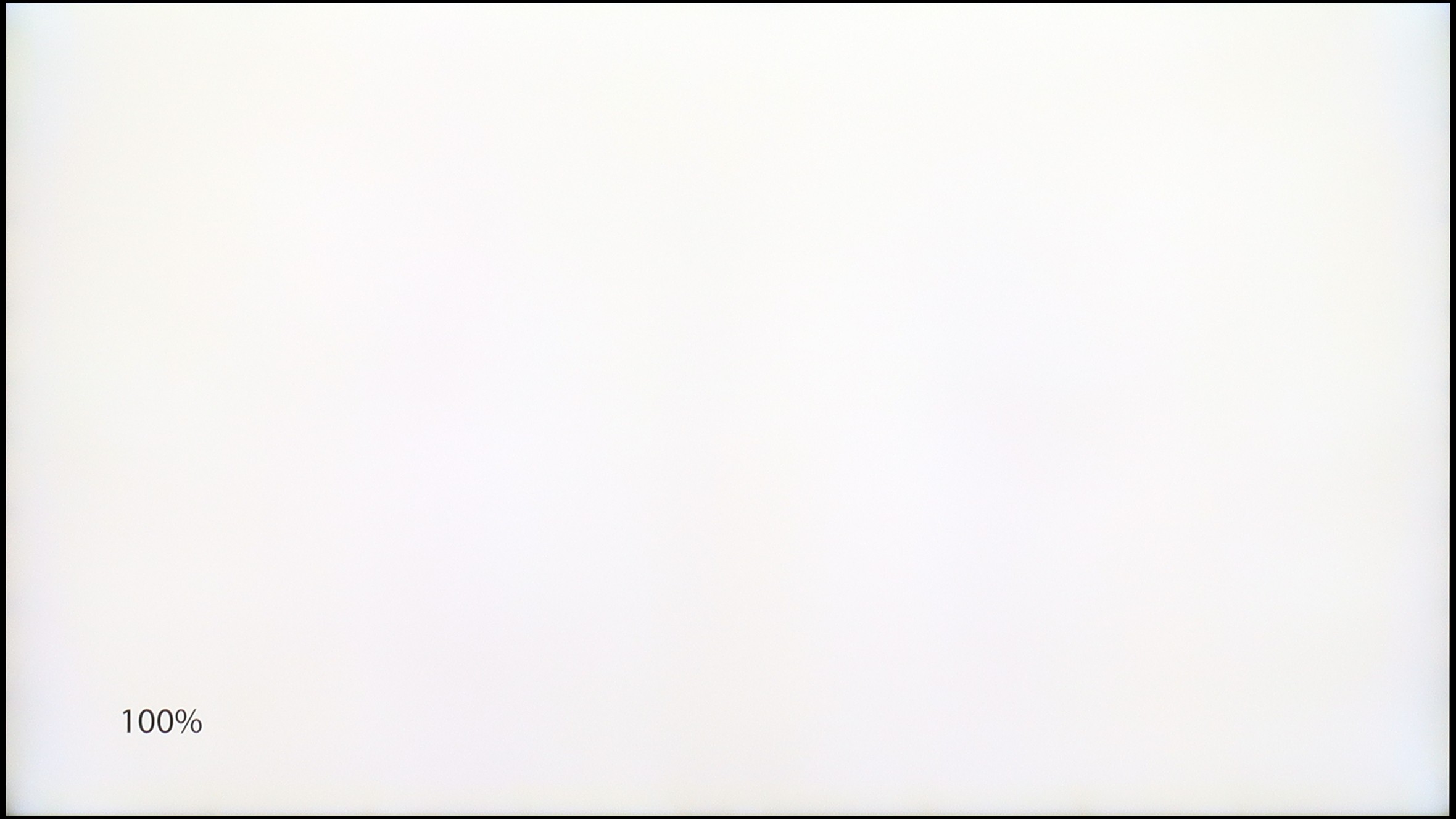

Samsung The Frame Pro
Samsung OLED S90F (QD-OLED)
TV features
7.7/10
7.7/10
- HDMI inputs0 x HDMI 2.0, 5 x HDMI 2.1 48Gbps0 x HDMI 2.0, 4 x HDMI 2.1 48Gbps
- Other inputsToslink (Optical audio), IR (remote)
- OutputsToslink (Optical audio), eARC (HDMI), ARC (HDMI)Toslink (Optical audio), eARC (HDMI), ARC (HDMI)
- Network InterfacesWi-Fi 2.4GHz, Wi-Fi 5GHz, Ethernet (LAN) 100MbpsWi-Fi 2.4GHz, Wi-Fi 5GHz, Ethernet (LAN) 100Mbps
- TV receptionDVB-T, DVB-T2, DVB-S, DVB-S2, DVB-CDVB-T, DVB-T2, DVB-S, DVB-S2, DVB-C
Classic features:
- Recording to USB (terrestrial TV)
- Recording programming
- Picture in Picture (PiP)
- RF remote control (no need to aim at the screen)
- Backlit remote control
- Teletext
- Audio only mode
- Bluetooth headphones support
- Simultaneous Bluetooth headphones & TV audio
Smart features:
- AirPlay
- Screen mirroring (Windows Miracast)
- Voice search
- Voice search in native language
- Ability to connect a keyboard and mouse
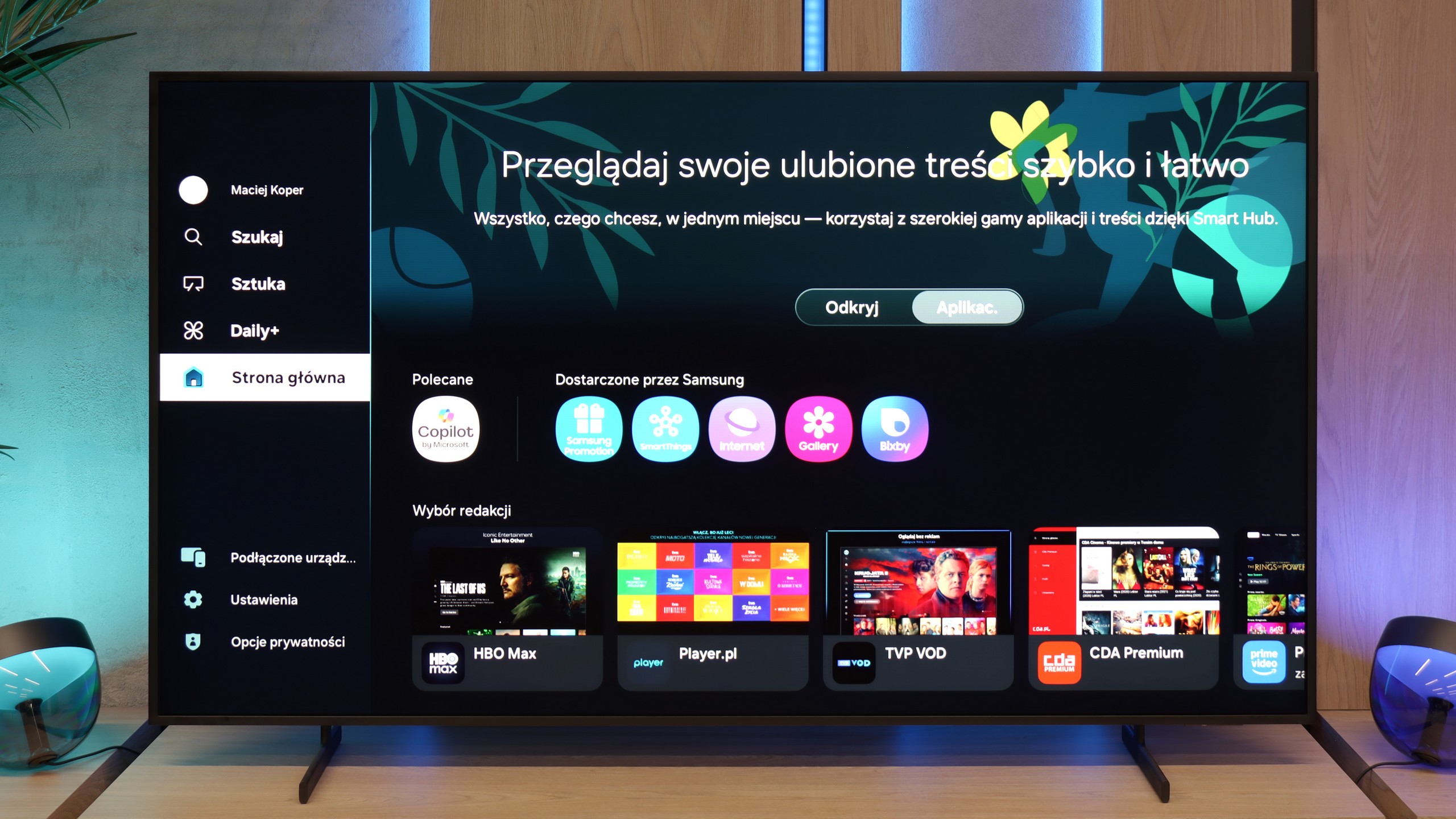
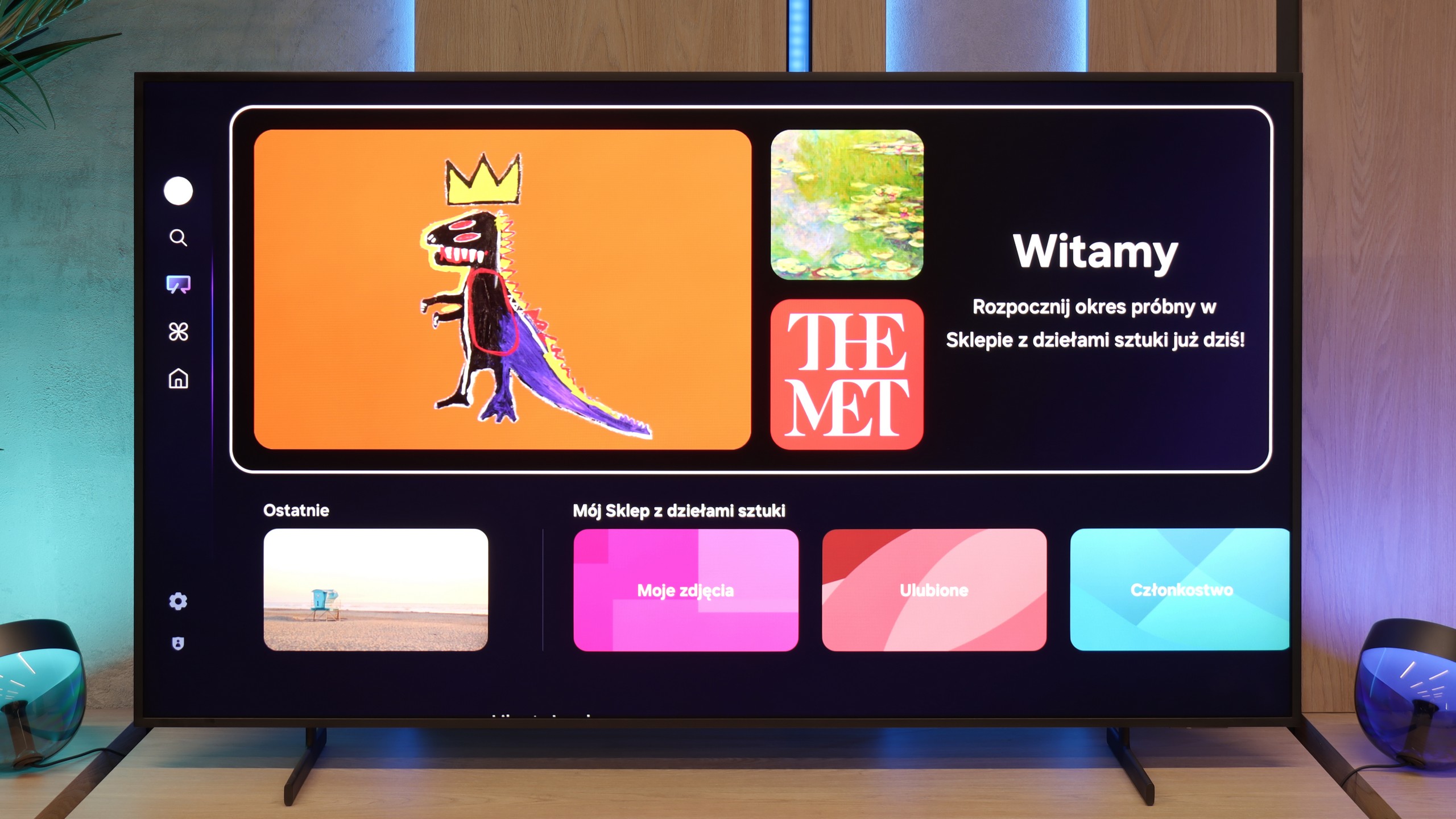
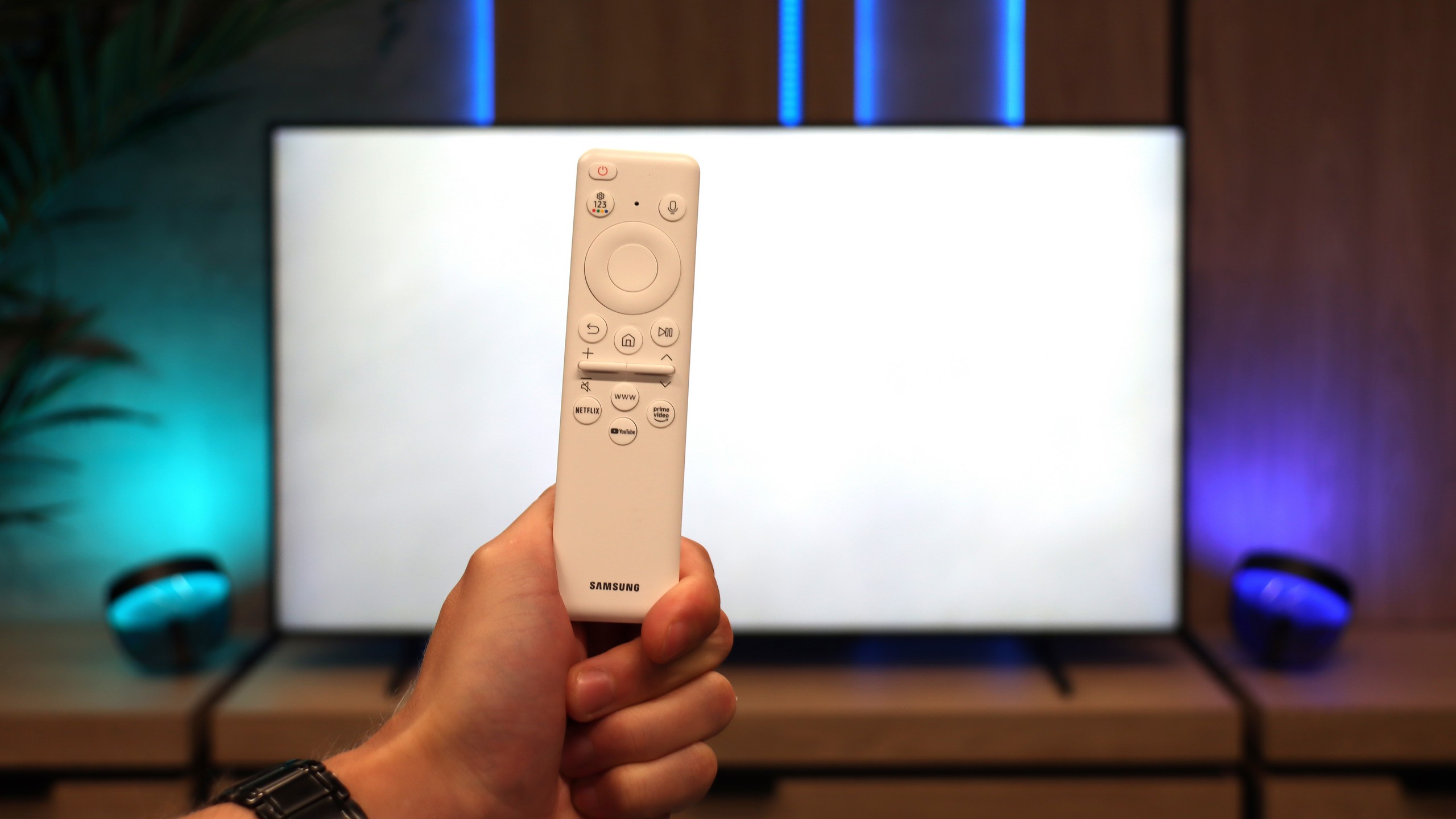
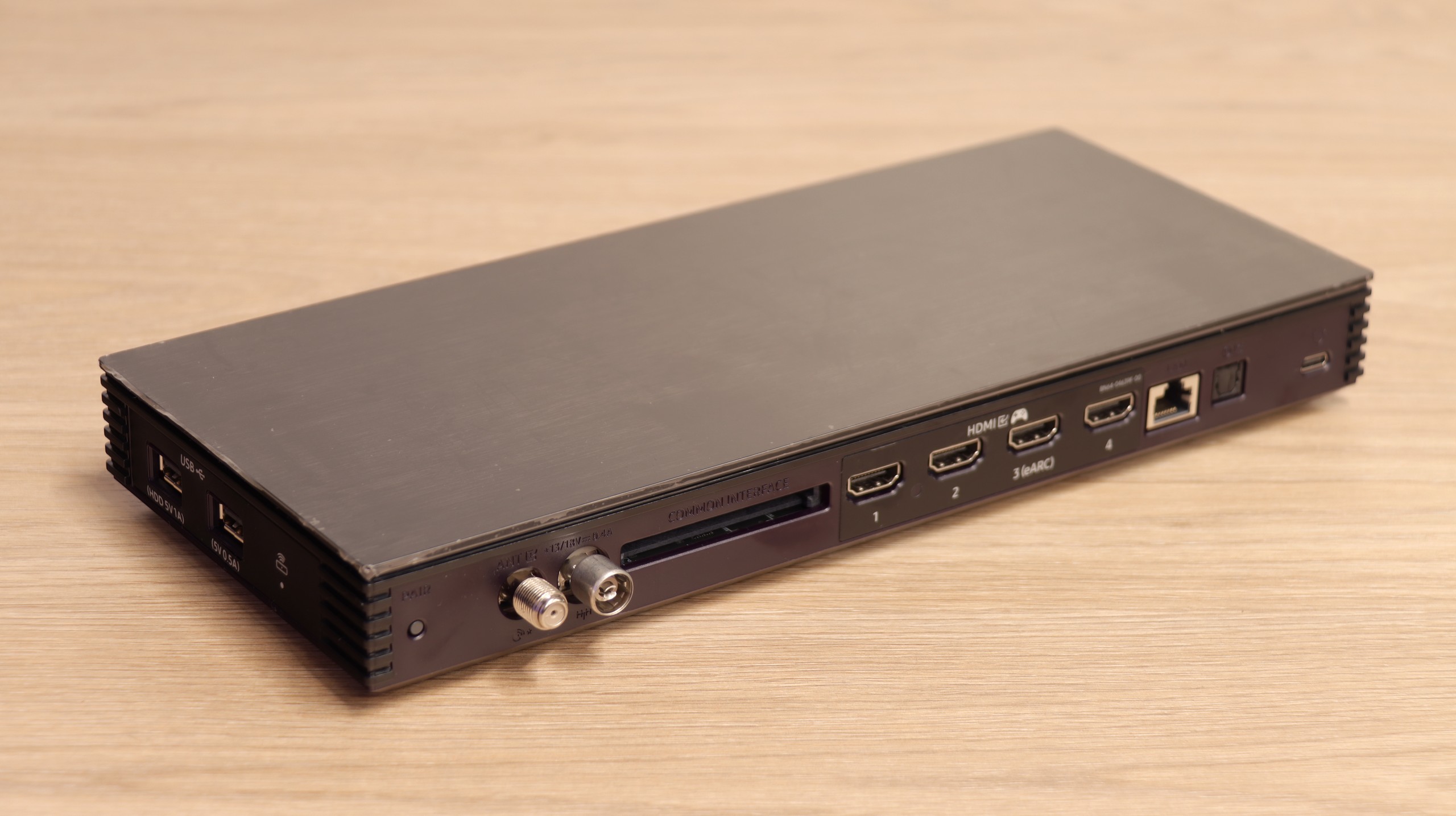
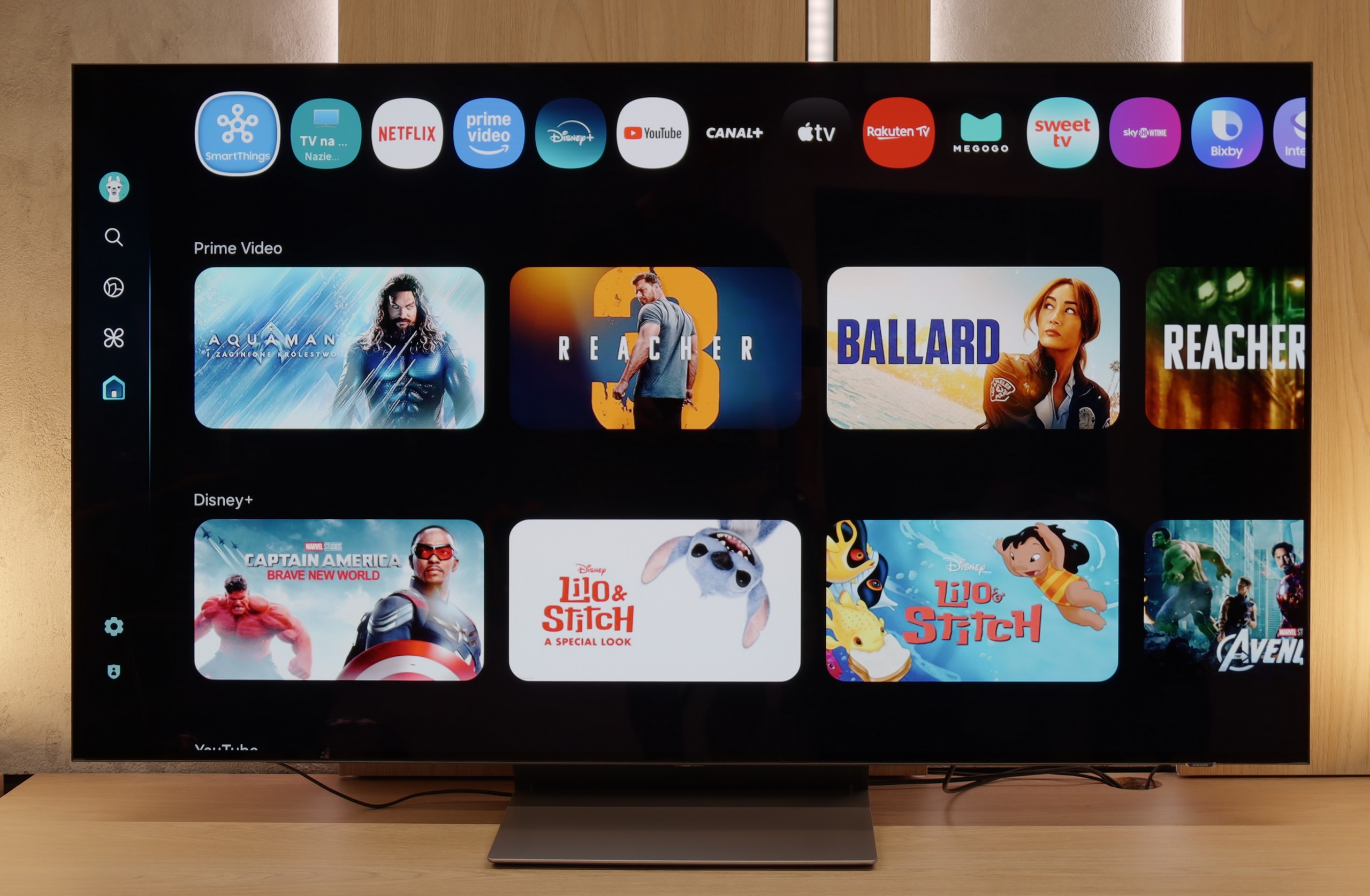
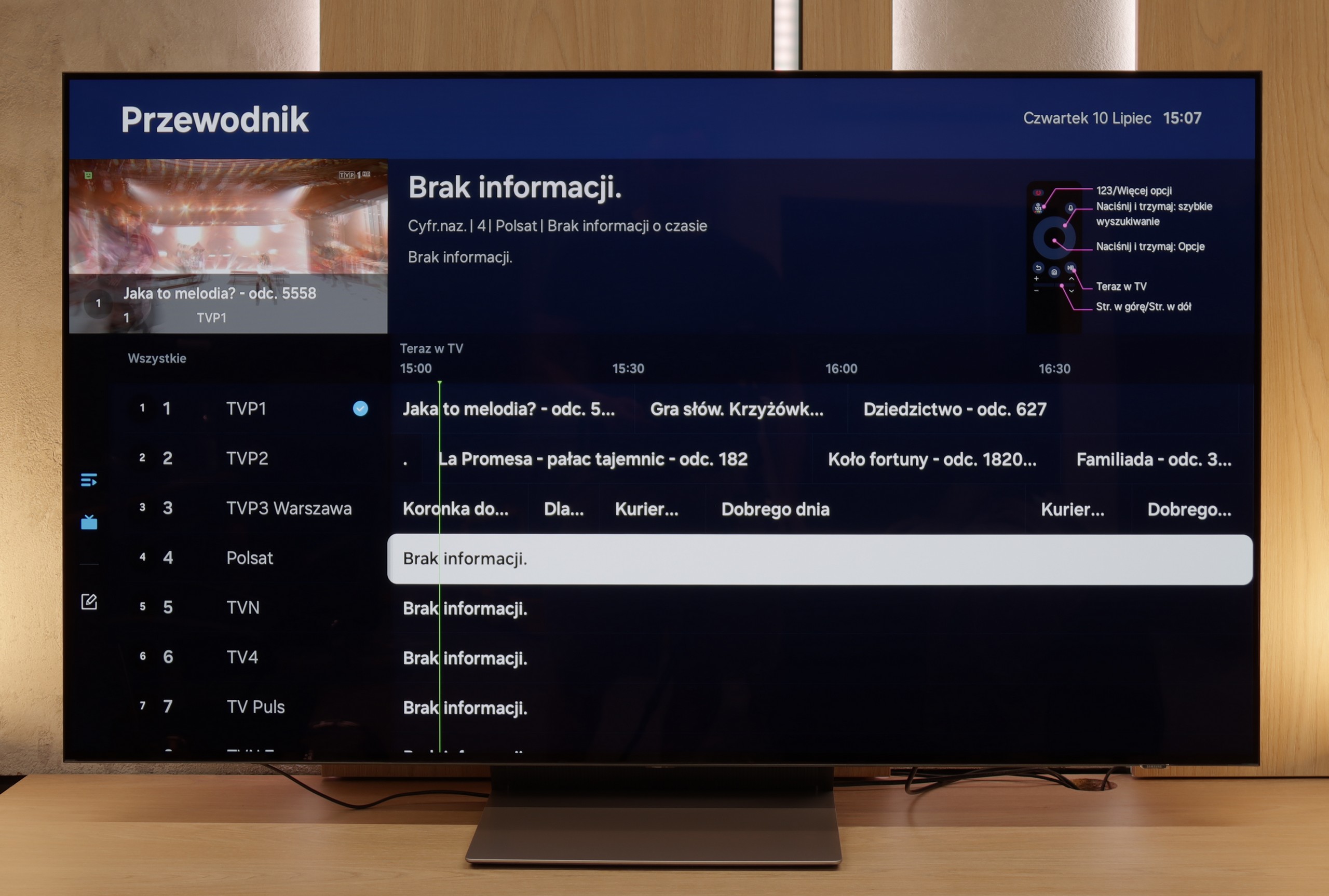
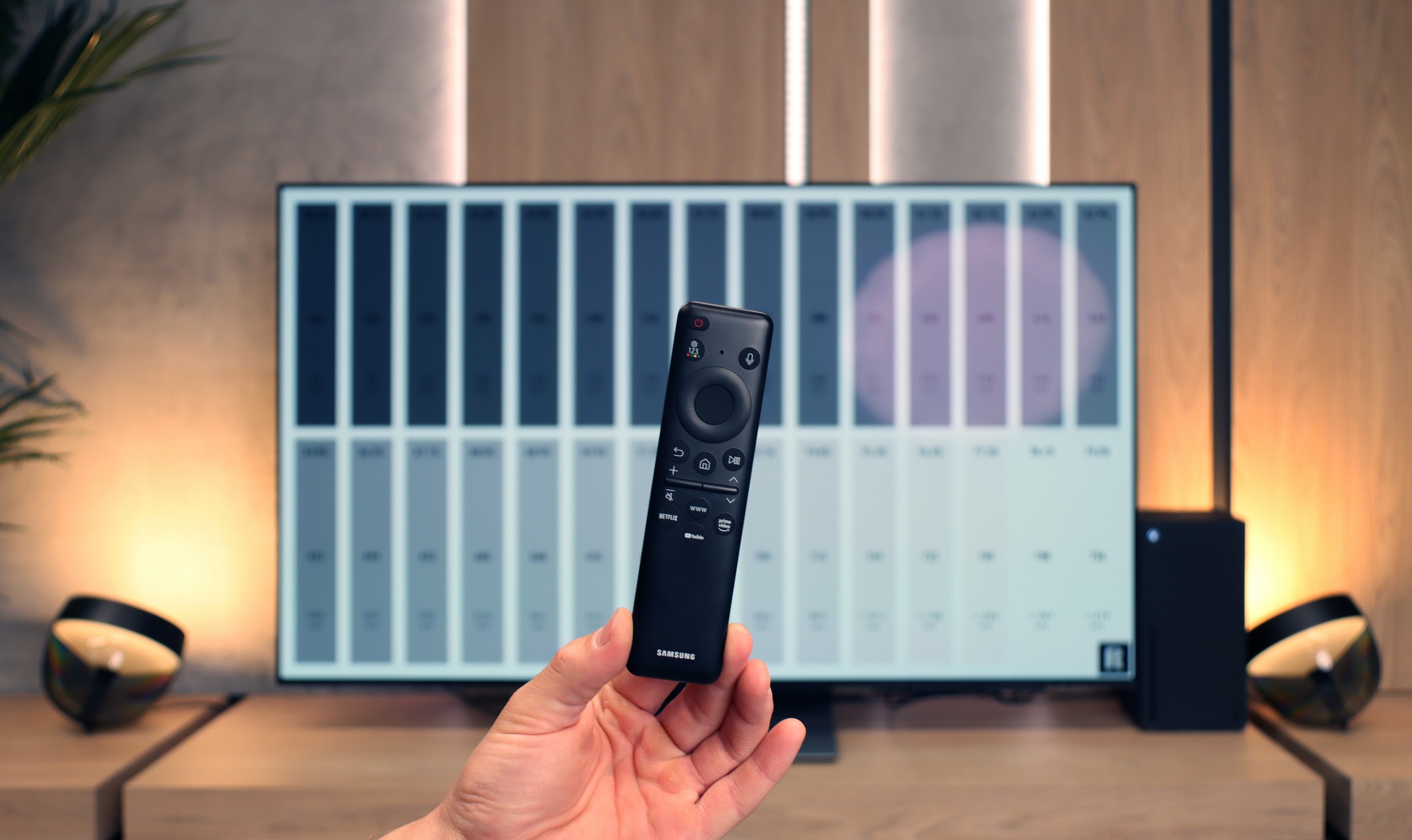
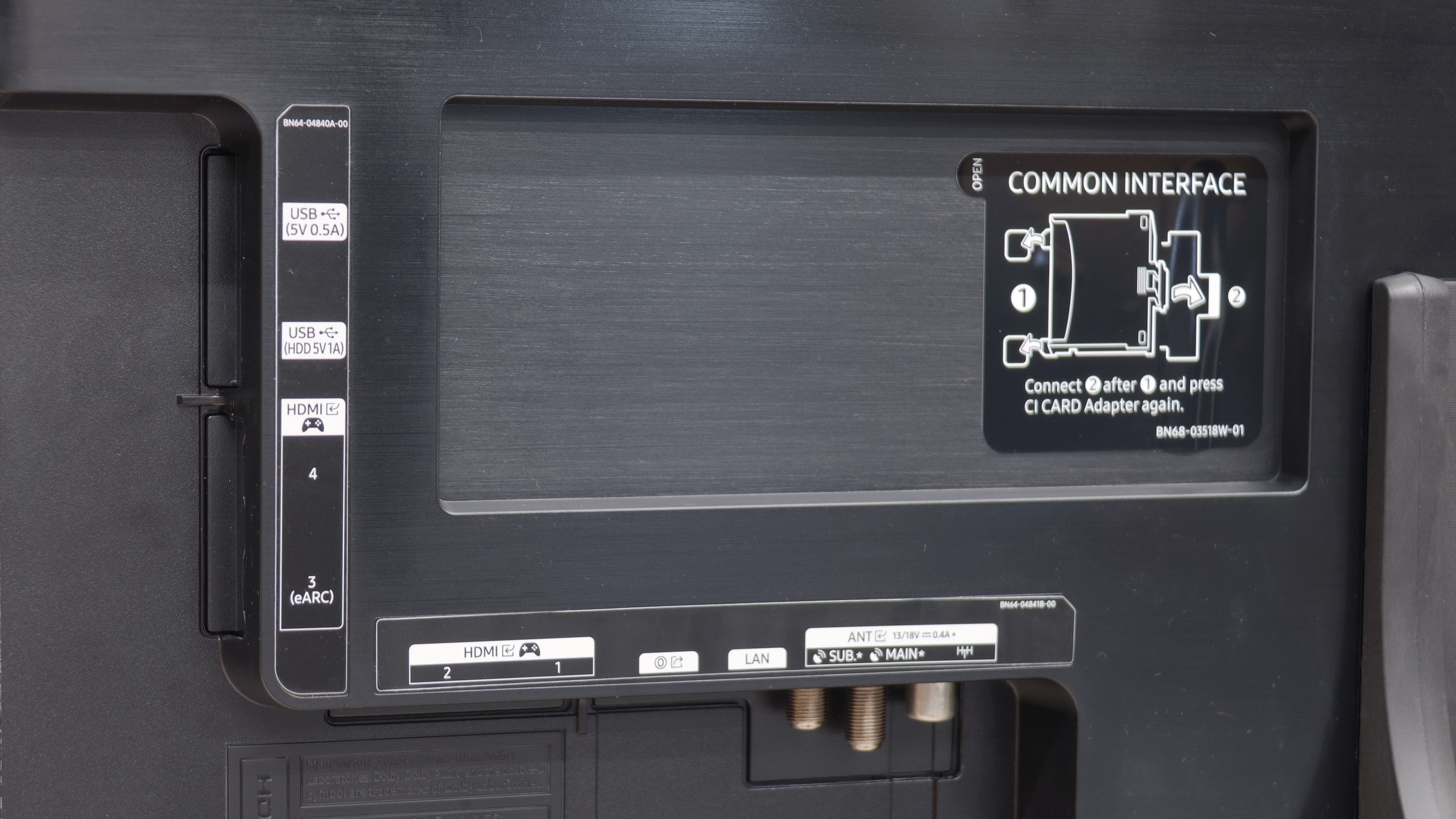
Smart Features
Samsung The Frame Pro runs on the Tizen system, which has been the hallmark of the Korean manufacturer for years. It is one of the most refined smart TV environments – fast, stable, and intuitive. It virtually includes all popular streaming applications, and the interface operates smoothly and without significant delays. Features such as AirPlay 2, screen mirroring, and voice control of the TV using Bixby, Alexa, or Google Assistant are also supported.
TV Functions
When it comes to classic TV functions – as in almost every Samsung – this is not the device's strongest aspect. We receive a clear EPG guide, teletext support, the ability to connect headphones via Bluetooth, and that's about it. We won't find more advanced tools known from TVs (e.g., USB recording or PiP). However, this is standard in Samsung's offering. The manufacturer has been setting trends for several years and focuses mainly on smart features, while traditional television is somewhat neglected.
Art Store and Interchangeable Frames – A Unique Element of the Series
What has distinguished the series The Frame since its inception is the Art Mode and the Art Store application. Thanks to it, we can display reproductions of artworks on the screen, ranging from classics to modern graphics. The service is indeed paid (in the form of a subscription or a one-time annual fee), but it ensures that the materials are prepared in the highest quality, making the displayed images look almost as if painted. This element, along with the option to change the TV's frames, makes The Frame Pro serve a dual purpose as a television and a stylish interior design element.
Wireless One Connect Module
The second unique element of The Frame PRO is the wireless One Connect module, which includes all HDMI ports and other connections. This allows the TV to hang on the wall almost like a real painting, while all the electronics and cables can be placed in a separate box positioned even a few meters away. The device is powered via USB-C and takes over all the "thinking" processes of the TV. While this solution has its limitations for gamers or those using PCs (latency, deterioration in font quality), it works great for connecting amplifiers, decoders, or individual multimedia devices. It's a very "gadgety" solution, but in everyday use, it proves to be simply convenient and allows for better arrangement of space in the living room.
SmartTV Features: Tizen.
A huge advantage of the S90F in everyday use is the Tizen operating system. It is one of the fastest systems on the market and has been working exceptionally well on Samsung televisions for years, and on those from the higher-end – like this one – it's virtually lightning-fast. The menu responds without delays, switching between applications is smooth, and the whole setup is intuitive enough that even someone encountering a Smart TV for the first time will find their way around it. In the app store, we can find practically everything we need – from Netflix to HBO Max, and even less obvious services. While there may not be GoogleTV here, there is really no sense that we are missing anything. A big plus has to be given for the integration with SmartThings. This solution is for those who like to have their entire home under control in one application. The television can be part of the IoT device ecosystem and will easily communicate with the washing machine, air conditioning, or lighting, as long as everything is on the same network.
Classic Functional Features
When it comes to classic features, we have everything one might expect: support for HDMI 2.1, USB ports, optical output, connectivity via Wi-Fi and Bluetooth. The only thing that might be missing for more conservative movie fans is support for DTS:X audio formats – especially if someone watches movies on physical media. The remote control may initially seem a bit odd, as it lacks traditional numeric buttons. But this is now standard in today's world of televisions, and most users quickly adapt to it. A plus is that it works completely wirelessly. The point is that you don’t need to aim at the screen; just press a button on the remote from anywhere (even from another room) and the television responds to our actions.
Playing files from USB
9.1/10
9.1/10
Supported photo formats:
Maximum photo resolution:
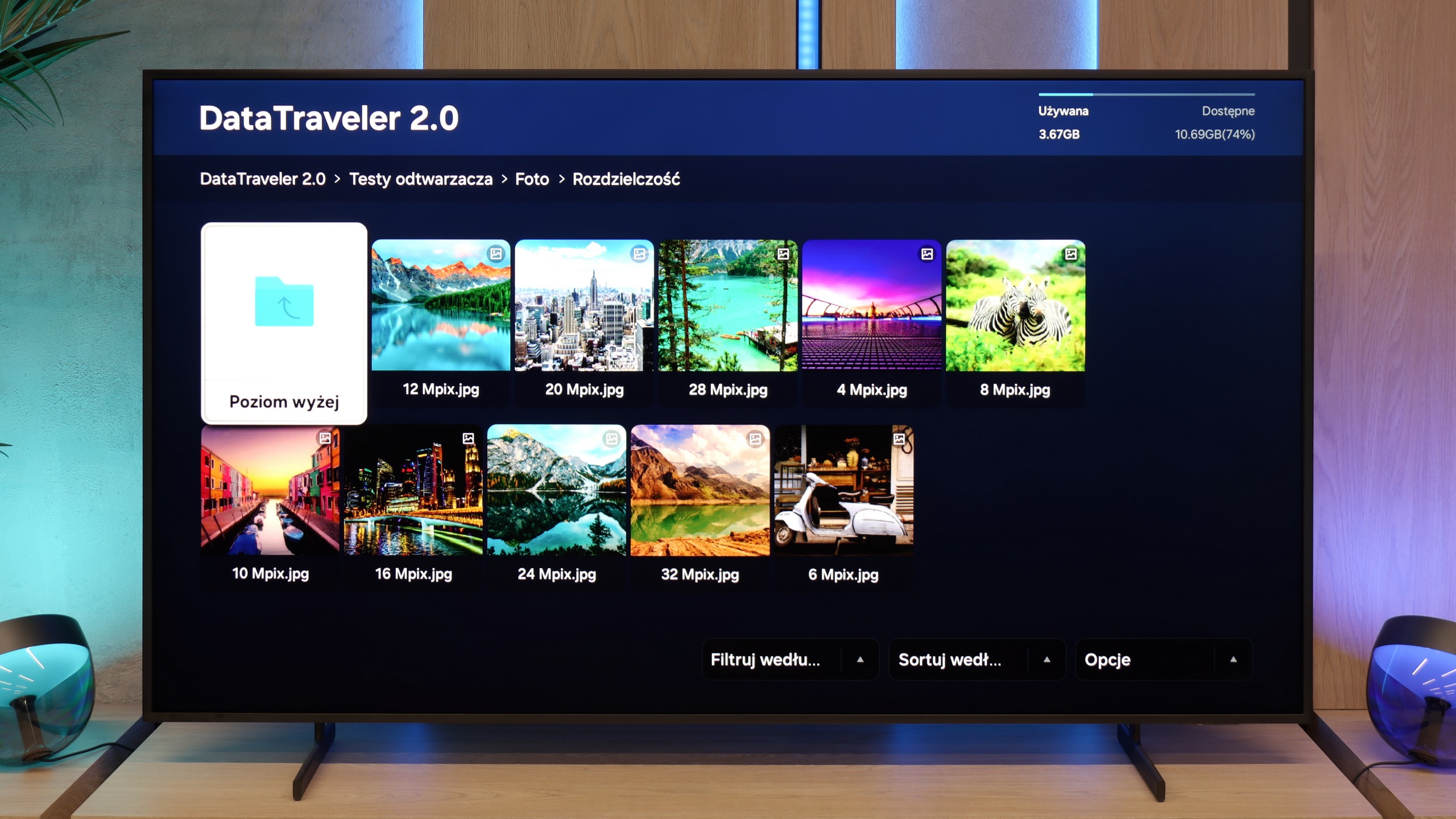
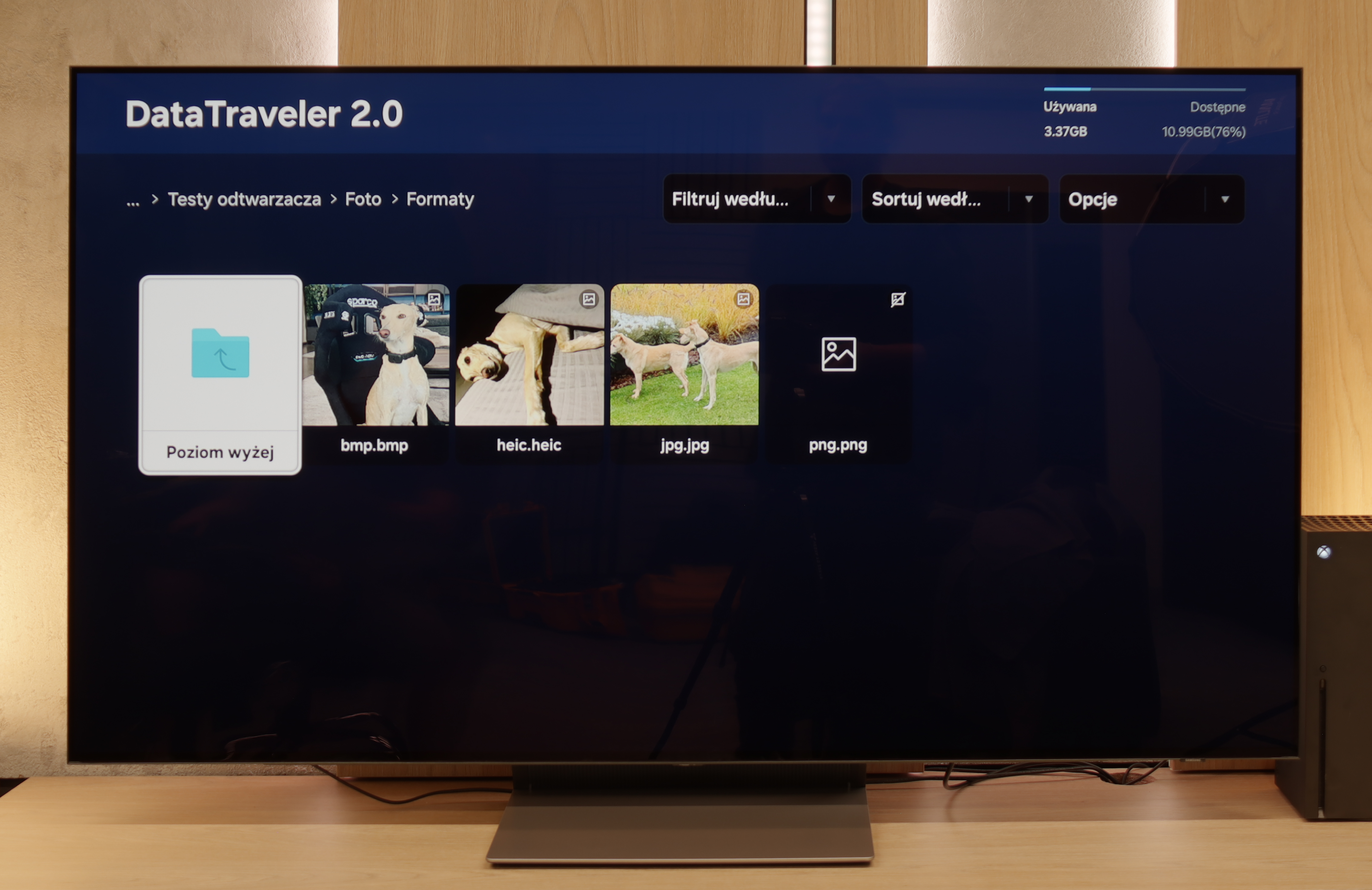
The Frame Pro handles multimedia playback from a USB drive correctly. Most popular movie, music, and photo formats work without major problems, and the TV manages them efficiently. During tests, we noticed only one inconvenience – files in HEIC format, which is a standard used by Apple, do not open even though the system sees them and displays them in the player. For those who often transfer photos from an iPhone, this may be a minor inconvenience, but apart from that, the player does its job well, and it's hard to have significant complaints about it.
The player built into the S90F works really well and is more than adequate for most users. It easily opens movies or music stored on a flash drive or external hard drive and handles most popular formats. The only "serious" issue we encountered is the lack of support for HEIC photos – that is, those that can be saved by an iPhone. (Though we suspect that 90% of people still use the JPEG format anyway).
Apps
8.7/10
8.7/10














































Sound
6.4/10
7.4/10
- Maximum volume84dB84dB
- Dolby Digital Plus 7.1
- Dolby True HD 7.1
- Dolby Atmos in Dolby Digital Plus (JOC)
- Dolby Atmos in Dolby True HD
- DTS:X in DTS-HD MA
- DTS-HD Master Audio
The sound on The Frame Pro is not one of this TV's strongest features. Its slim design means there's virtually no bass, which makes the overall audio sound a bit flat and average. On the other hand, the TV plays loudly – it can easily fill a medium to larger room. Dialogues are clear, but when it comes to special effects or music, there’s a lack of depth. This is definitely a piece of equipment for which it's worth buying a soundbar, preferably from the designer Samsung S series. Thanks to decorative frames, it can be matched to the decor alongside ChooseTV.
The S90F sounds really pleasant for a television – the bass is noticeable, the dialogues are clear, and overall, it has quite a decent dynamic range. Dolby Atmos also does its part, as it can give the sound a bit of space, making the movie experience better than in most basic built-in setups in other televisions. However, it must be said bluntly: no television, even one of this class, can replace a separate sound system. If someone really wants to feel like they’re in a cinema, the best solution would be to purchase a soundbar or a full audio system. Especially since, as is typical with Samsung, there is no support for DTS:X – so fans of Blu-ray discs and high-quality soundtracks will still have to reach for external equipment connected directly to the source.
Acoustic Measurements
84dBC (Max)
75dBC
84dBC (Max)
75dBC


